Transform your outdoor living space with these inspiring wood deck designs that combine natural beauty, functionality, and style. Whether you're building a new deck or renovating an existing one, wood remains the classic choice for creating warm, inviting outdoor areas. From cedar's natural resistance to redwood's stunning color variations, each wood deck idea offers unique benefits and aesthetic appeal. These designs range from simple floating platforms to elaborate multi-level structures, ensuring there's a perfect solution for every home, budget, and lifestyle preference.
1. Cedar Wood Deck with Natural Weather Resistance

Cedar stands out as one of the premier choices for wood decking due to its exceptional natural properties and timeless appeal. This aromatic softwood contains natural oils that repel insects and resist moisture, making it ideal for outdoor applications. Cedar wood decks typically showcase beautiful reddish-brown coloring that weathers gracefully to an elegant silvery-gray patina over time. The lightweight nature of cedar makes it easier to work with during installation, while its natural stability means less warping and splitting compared to other wood species. Homeowners appreciate cedar's ability to accept stains beautifully, allowing for customization while maintaining the wood's distinctive grain patterns and natural charm for decades.
2. Redwood Deck Design for Premium Outdoor Living
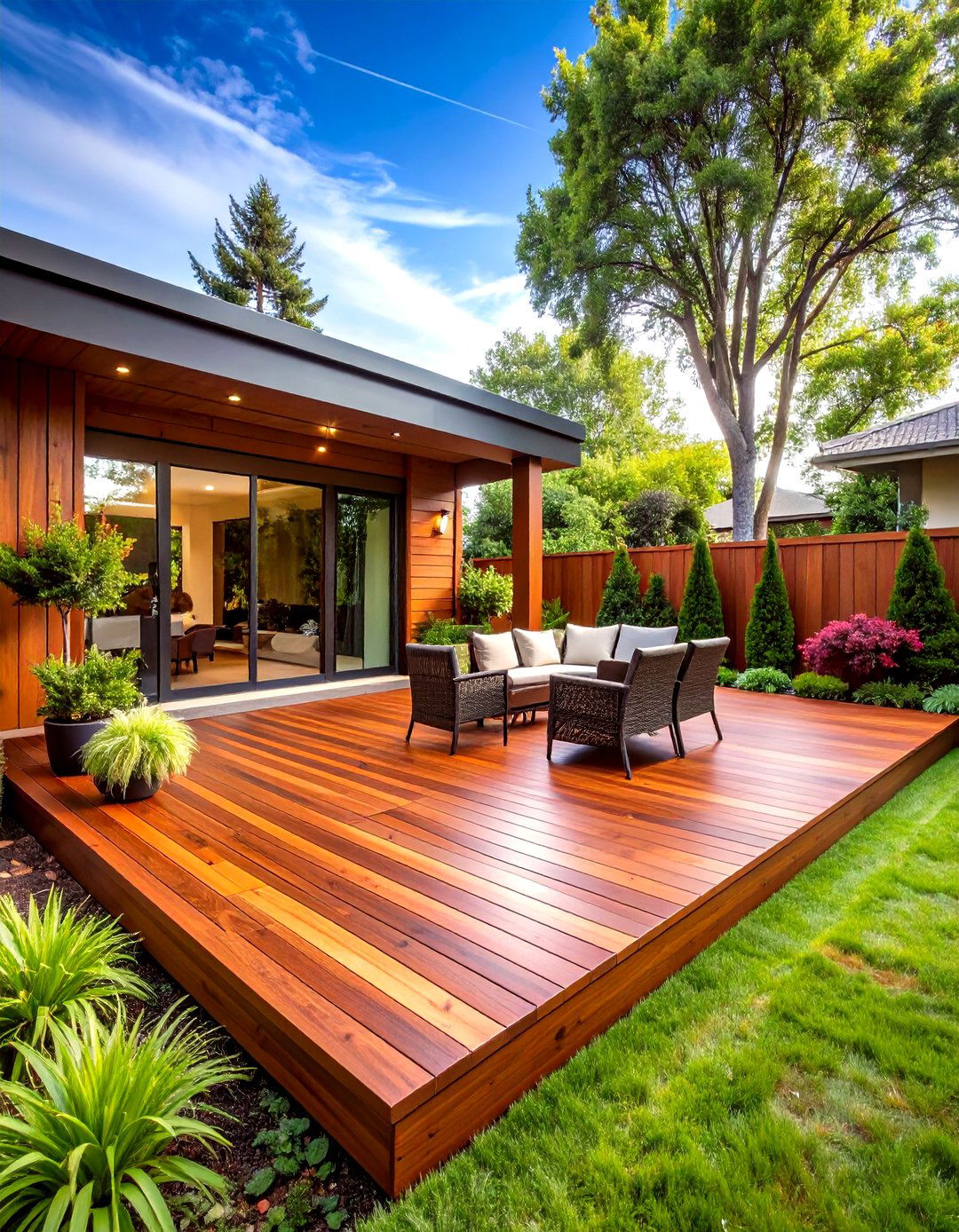
Redwood decking represents the gold standard in luxury wood deck construction, offering unmatched durability and stunning visual appeal. This premium hardwood features rich, reddish-brown hues with distinctive grain patterns that create an instantly recognizable and sophisticated outdoor space. Redwood's natural tannins provide superior resistance to decay, insects, and weather damage, often lasting 25+ years with proper maintenance. The wood's dense structure makes it particularly suitable for high-traffic areas and entertaining spaces. While redwood requires a higher initial investment, its longevity and ability to maintain structural integrity in harsh climates make it a cost-effective choice for homeowners seeking a deck that combines luxury aesthetics with practical performance benefits.
3. Pressure-Treated Wood Deck for Budget-Conscious Projects
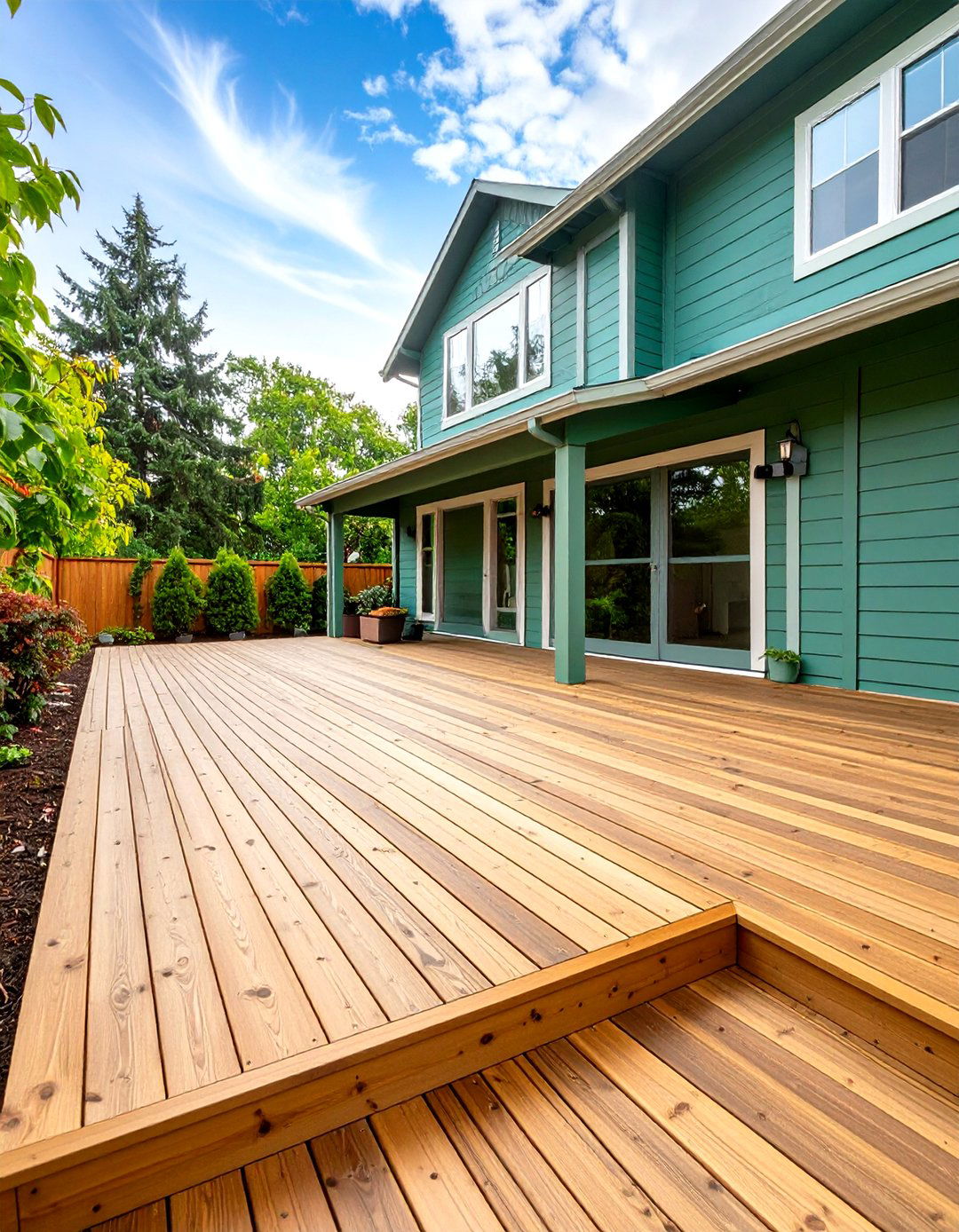
Pressure-treated wood decking offers an affordable entry point into wood deck ownership without sacrificing durability or functionality. This chemically-treated lumber, typically made from pine or fir, receives preservative treatment under high pressure to resist rot, decay, and insect damage. Pressure-treated wood deck designs provide excellent structural strength, making them ideal for deck framing and support systems. The treatment process gives the wood a characteristic greenish tint that can be enhanced with staining or painting to achieve desired aesthetics. Homeowners choose pressure-treated wood for its wide availability, budget-friendly pricing, and proven track record of lasting 15-20 years with regular maintenance, making it perfect for large deck projects or first-time builders.
4. Multi-Level Wood Deck with Tiered Entertaining Spaces
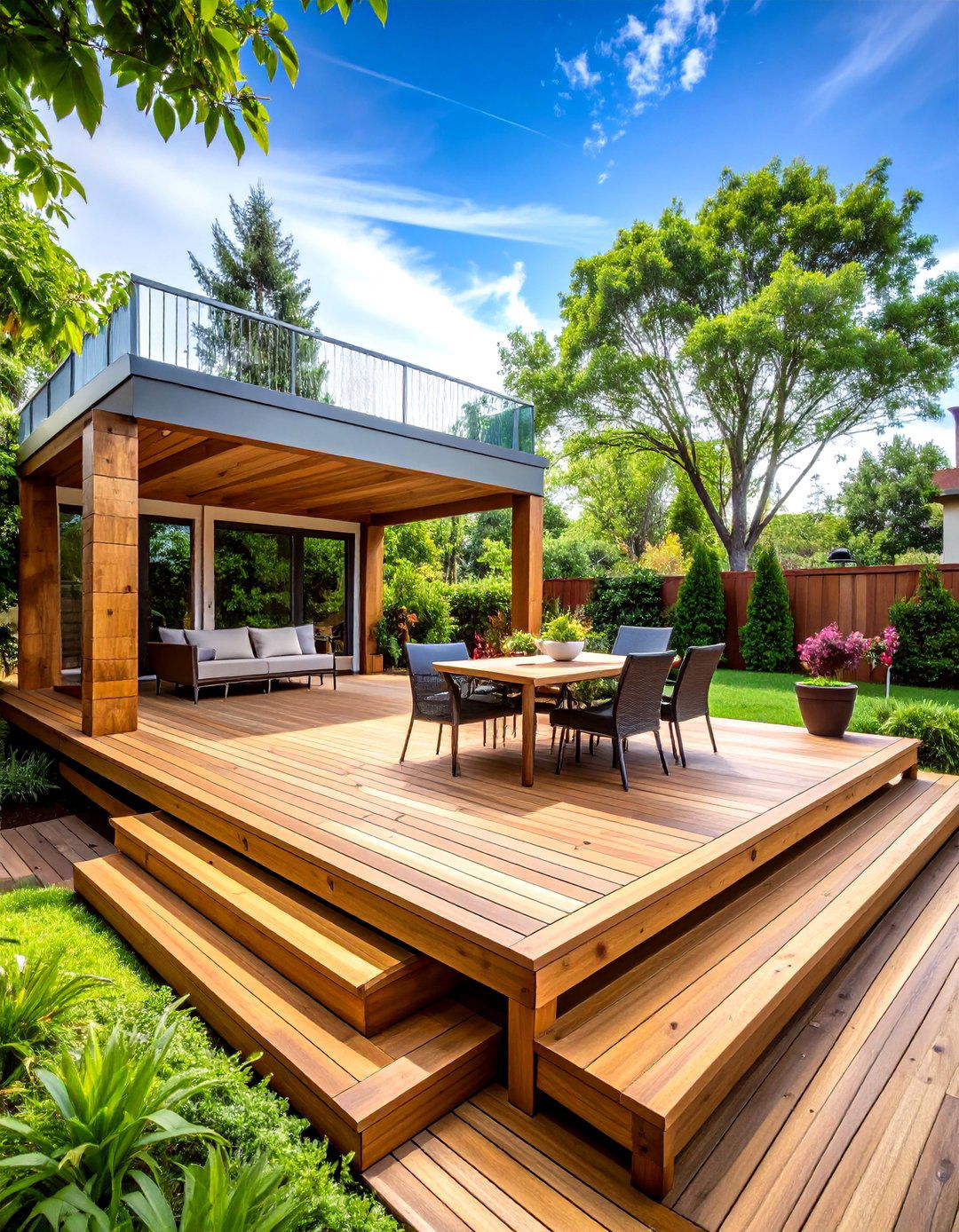
Multi-level wood deck designs maximize outdoor space functionality by creating distinct zones for various activities within a single structure. These tiered designs typically feature separate areas for dining, lounging, cooking, and entertaining, connected by attractive wooden stairs or transitions. Upper levels often serve as intimate dining spaces with easy kitchen access, while lower tiers accommodate casual seating, fire pits, or hot tubs. The varied elevations add architectural interest and help define different functional areas without requiring walls or barriers. Multi-level wood decks work particularly well on sloped lots, allowing homeowners to work with natural terrain changes. These designs encourage traffic flow between spaces while maintaining the cohesive wooden aesthetic throughout all levels.
5. Floating Wood Deck for Versatile Backyard Placement
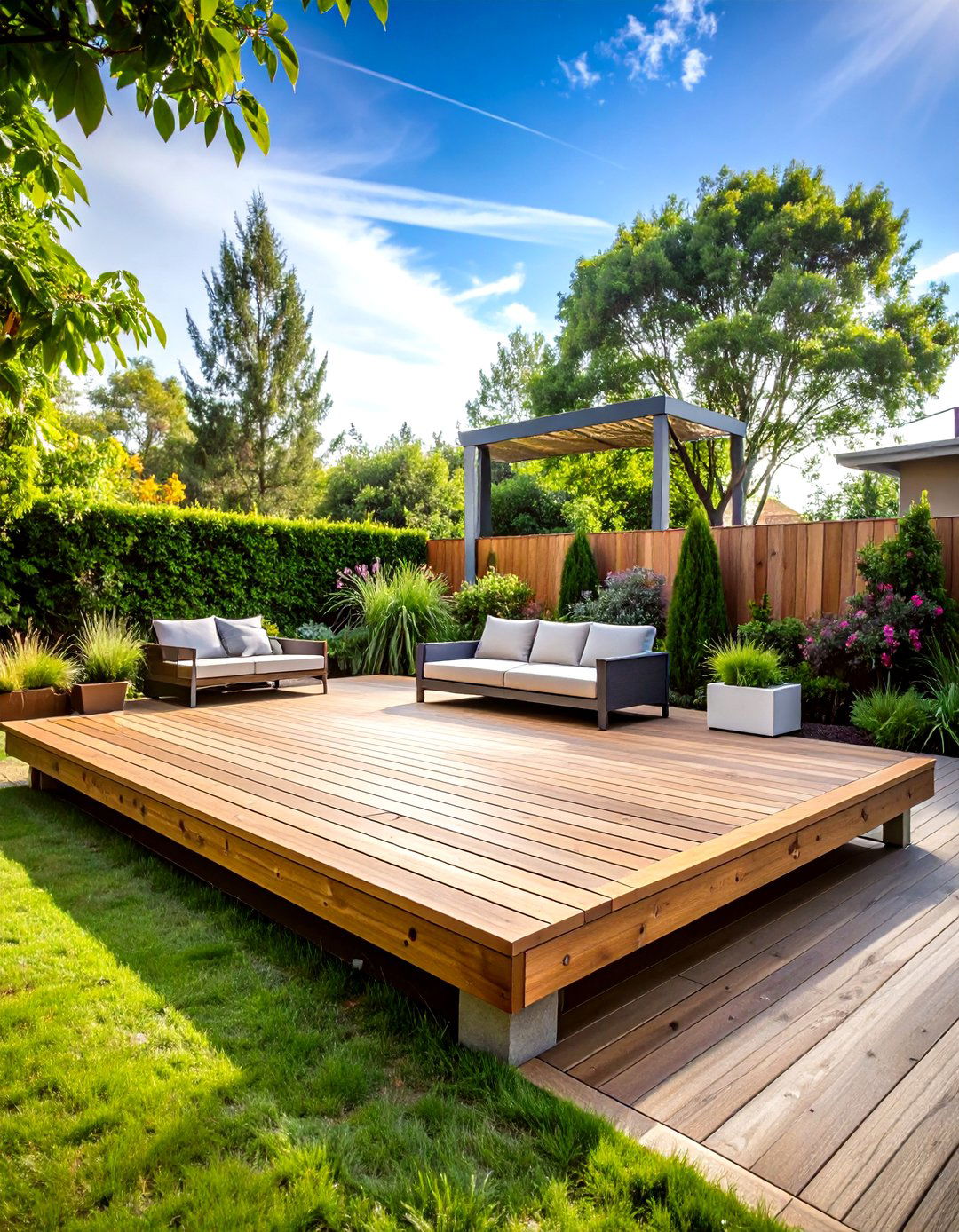
Floating wood deck ideas offer incredible flexibility for homeowners who want to add outdoor living space without permanent structural attachment to their homes. These freestanding platforms can be positioned anywhere in the yard, making them perfect for creating secluded retreats, garden gathering spots, or play areas. Floating wood decks typically sit on concrete blocks or adjustable pedestals, eliminating the need for deep footings or complex foundation work. The modular nature of floating deck construction allows for easy relocation, expansion, or seasonal removal if desired. These designs work exceptionally well for renters, small spaces, or areas where traditional deck attachment isn't feasible. The wooden platform creates an instant upgrade to any outdoor area while maintaining natural aesthetics.
6. Wood Deck with Pergola for Stylish Shade Integration
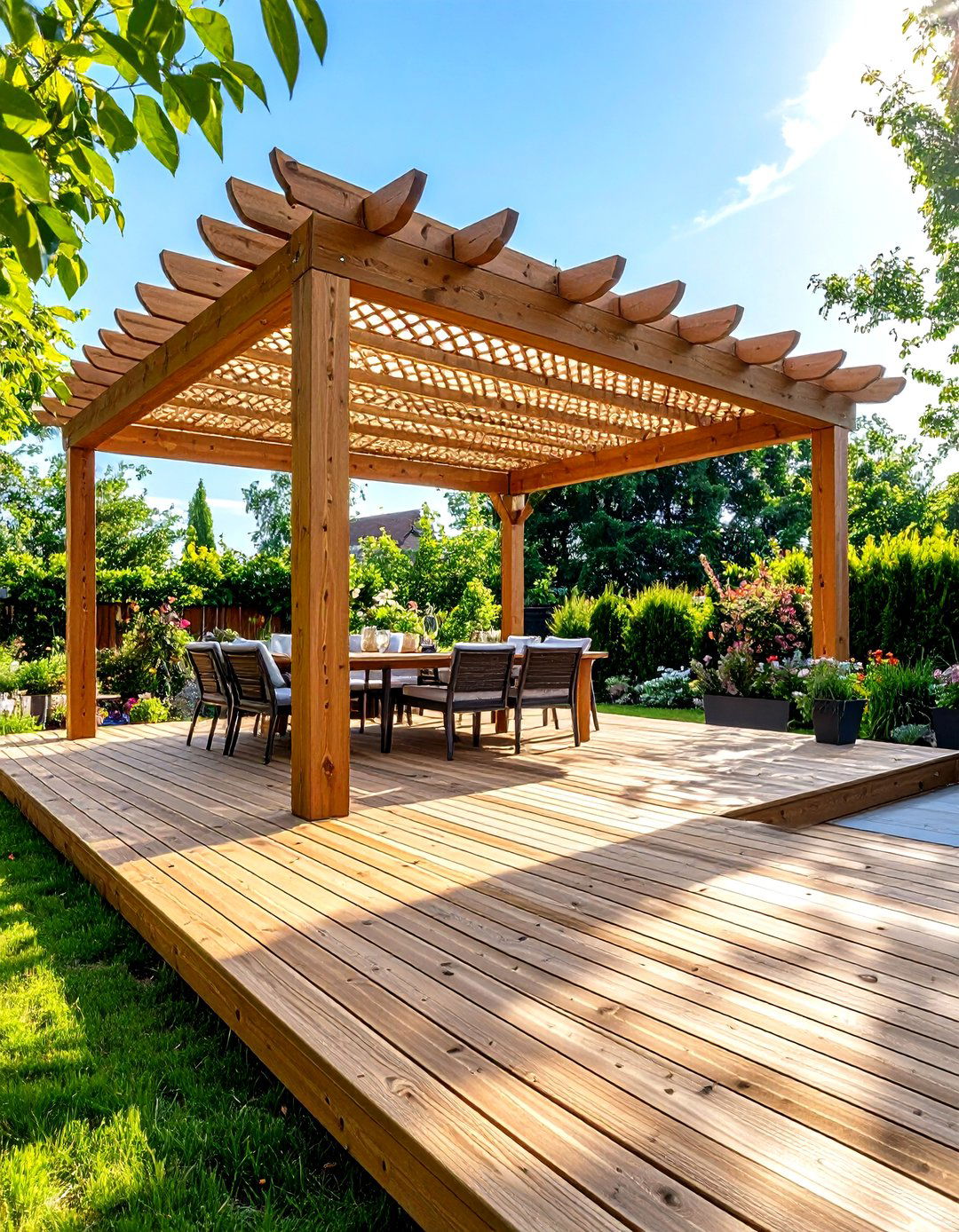
Combining wood decking with pergola structures creates the perfect balance of open-air enjoyment and comfortable shade protection. Wood deck pergola designs feature coordinated materials that create visual harmony between horizontal decking and vertical structural elements. The pergola's latticed or beam roof provides filtered sunlight while supporting climbing plants, string lights, or fabric panels for additional comfort. These integrated designs define outdoor rooms within the larger deck space, creating intimate dining or seating areas. Pergolas add significant architectural interest and can accommodate various styles from rustic cedar constructions to sleek modern designs. The combination of deck and pergola increases property value while extending the usable seasons for outdoor entertaining through improved weather protection and aesthetic appeal.
7. Curved Wood Deck Design for Organic Flow
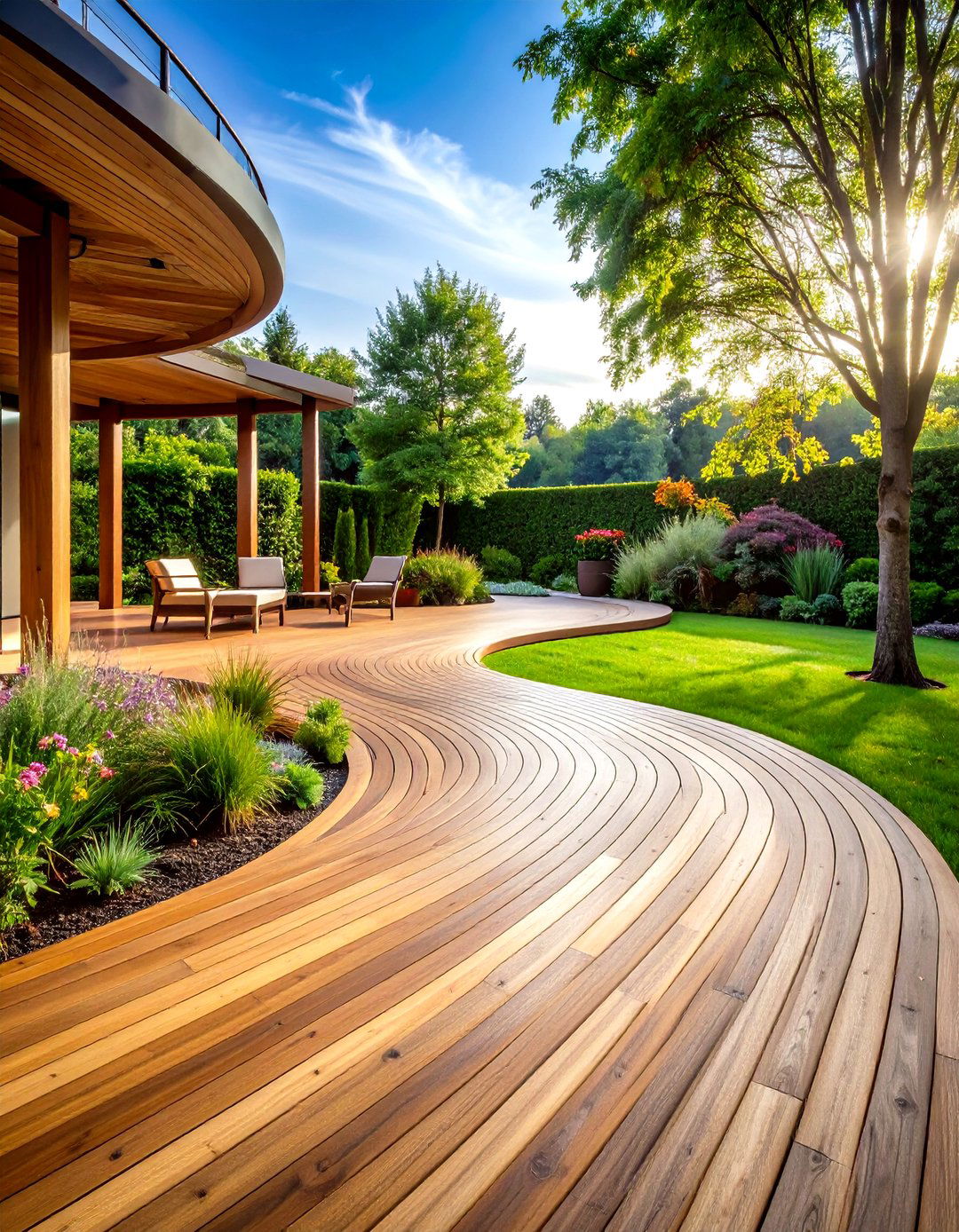
Curved wood deck designs break away from traditional rectangular layouts to create flowing, organic outdoor spaces that complement natural landscapes. These sophisticated structures require careful planning and skilled construction but deliver dramatic visual impact and seamless integration with surrounding gardens or terrain features. Curved wooden elements soften harsh architectural lines while creating natural traffic patterns that encourage exploration and conversation. The curved design allows for creative furniture arrangements and landscaping opportunities that aren't possible with straight-lined decks. Special attention to joist spacing and railing systems ensures structural integrity while maintaining the graceful curves. These designs work particularly well around pools, gardens, or properties with curved architectural features, creating cohesive outdoor environments that feel naturally integrated rather than imposed upon the landscape.
8. Wrap-Around Wood Deck for Maximum Home Integration
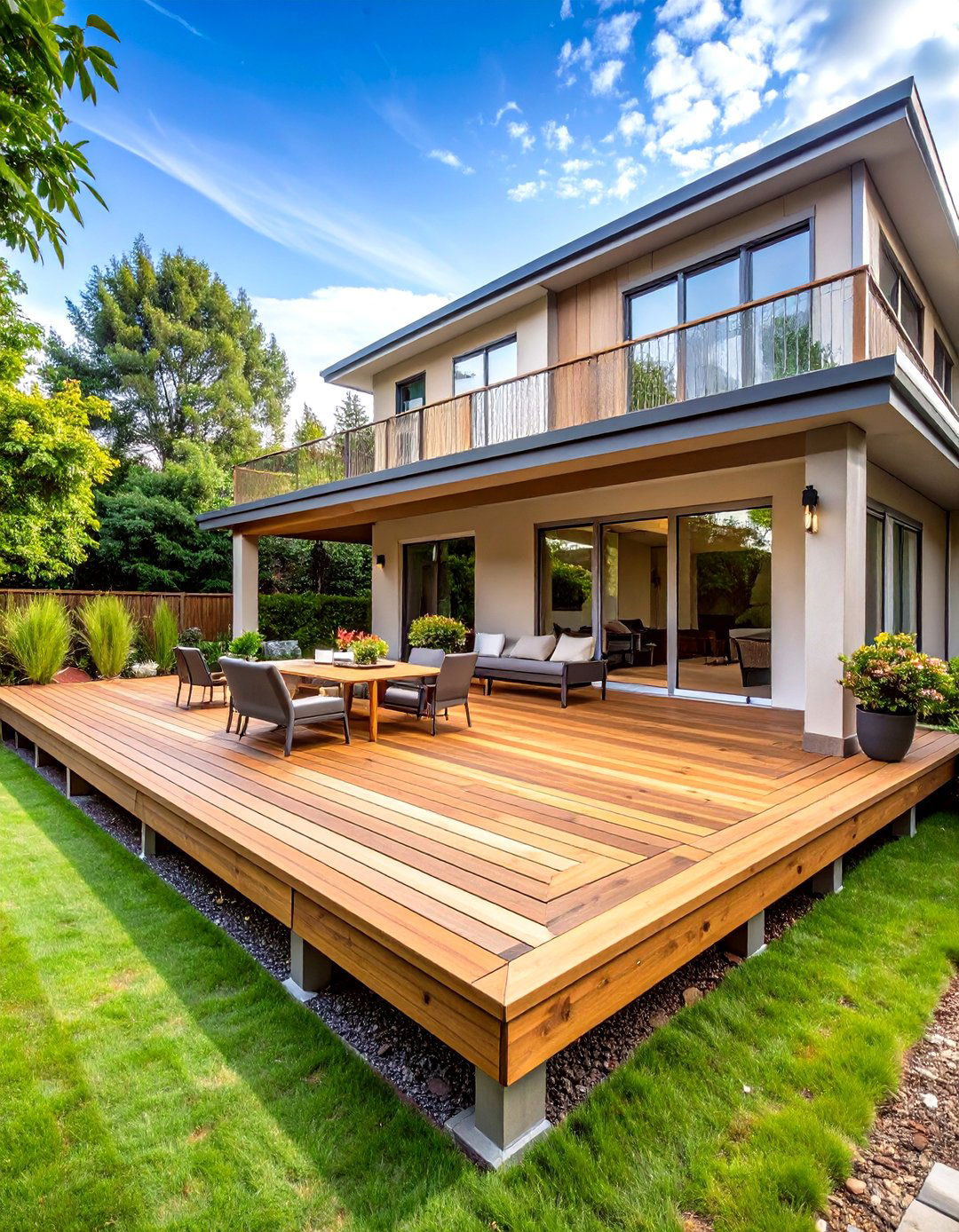
Wrap-around wood deck designs create comprehensive outdoor living spaces that extend along multiple sides of the home, providing access from various interior rooms and maximizing outdoor entertaining potential. These expansive wooden platforms often feature different functional zones corresponding to adjacent interior spaces – kitchen access areas for outdoor dining, living room extensions for lounging, and bedroom access for private morning coffee spots. The continuous wooden surface creates visual flow while allowing for varied railing styles, built-in features, and landscape integration along different sections. Wrap-around designs work exceptionally well with traditional home styles and provide excellent value by dramatically increasing usable outdoor space. The extended coverage offers multiple gathering areas and ensures the deck remains functional throughout different times of day as sun patterns change.
9. Wood Pool Deck for Aquatic Entertainment
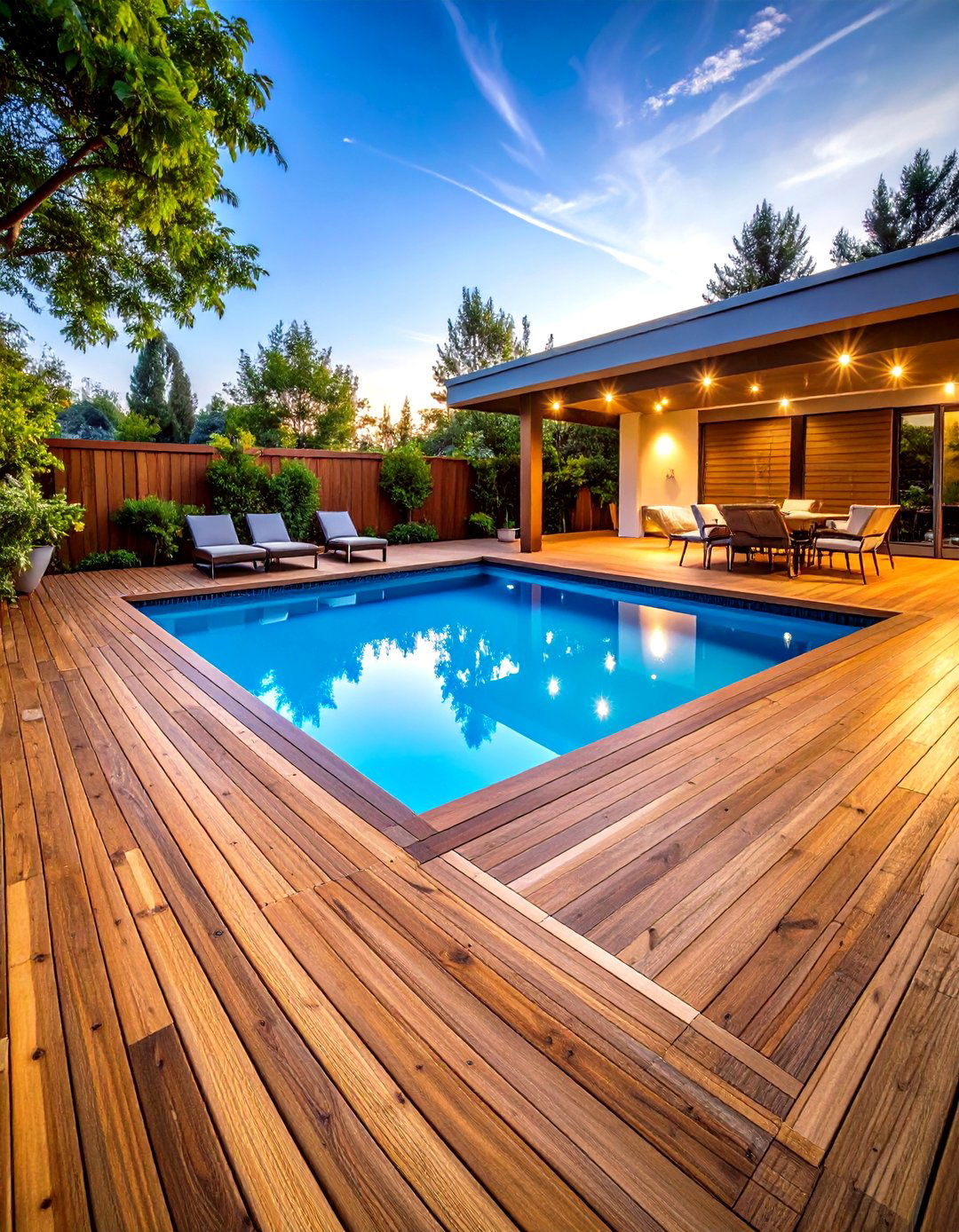
Wood pool deck designs create seamless transitions between swimming areas and outdoor entertaining spaces while providing safe, comfortable surfaces around water features. These specialized deck designs require moisture-resistant wood species and proper drainage systems to handle constant water exposure and heavy traffic. Elevated wood decking around above-ground pools creates the illusion of inground installations while providing convenient access and safety features. The natural wood surface offers comfortable barefoot walking compared to concrete or stone alternatives. Pool deck designs often incorporate multiple levels, built-in storage for pool equipment, and integrated seating areas. The wooden platform extends the pool's functional area for lounging, dining, and entertaining while maintaining consistent natural aesthetics throughout the entire aquatic environment.
10. Wood Deck with Fire Pit for Cozy Evening Gatherings
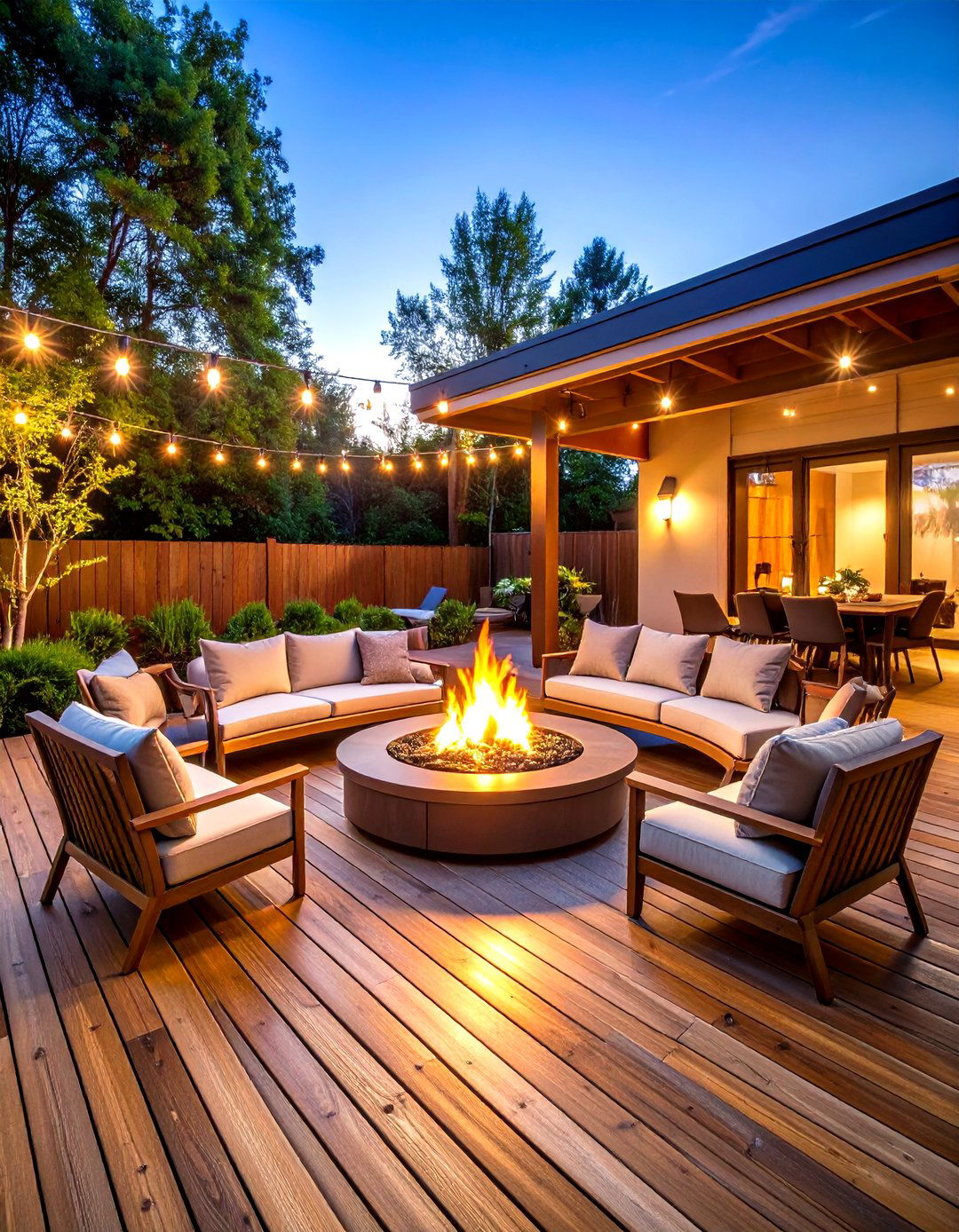
Integrating fire pit features into wood deck designs creates magical outdoor gathering spaces perfect for evening entertainment and year-round enjoyment. These designs require careful planning for safety, with proper spacing between fire features and combustible wood surfaces, often incorporating fire-resistant materials like stone or metal as protective barriers. The fire pit becomes a natural focal point that encourages circular seating arrangements and intimate conversation areas. Wood deck fire pit designs can accommodate various styles from rustic stone bowls to sleek modern gas features. The combination extends outdoor season usage while creating memorable ambiance for entertaining. Built-in benches or designated seating areas around the fire feature maximize functionality while maintaining the cohesive wooden aesthetic throughout the deck space.
11. Raised Wood Deck for Elevated Outdoor Views
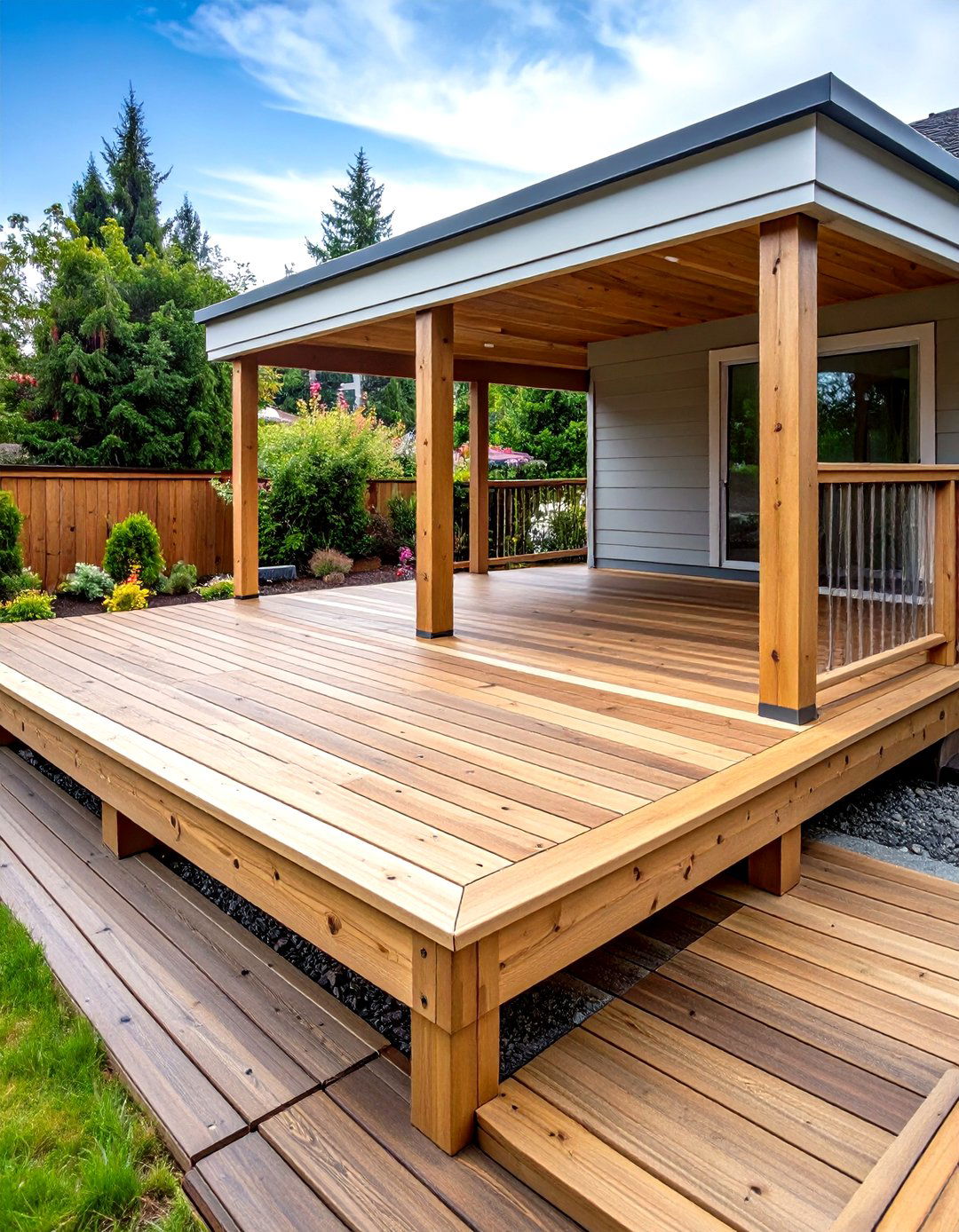
Raised wood deck designs lift outdoor living spaces above ground level to capture better views, improve drainage, and create impressive architectural statements. These elevated platforms work particularly well on sloped lots or where ground-level moisture issues exist. The height advantage provides privacy from neighboring properties while offering improved sightlines over gardens, water features, or distant landscapes. Raised wooden decks require substantial support structures and stair systems, creating opportunities for additional storage or covered spaces underneath. The elevation changes add dramatic visual interest while solving practical problems like poor drainage or uneven terrain. Safety railings become both functional necessities and design opportunities that can complement the home's architectural style while maintaining the natural wood aesthetic throughout the elevated structure.
12. Platform Wood Deck for Ground-Level Outdoor Rooms
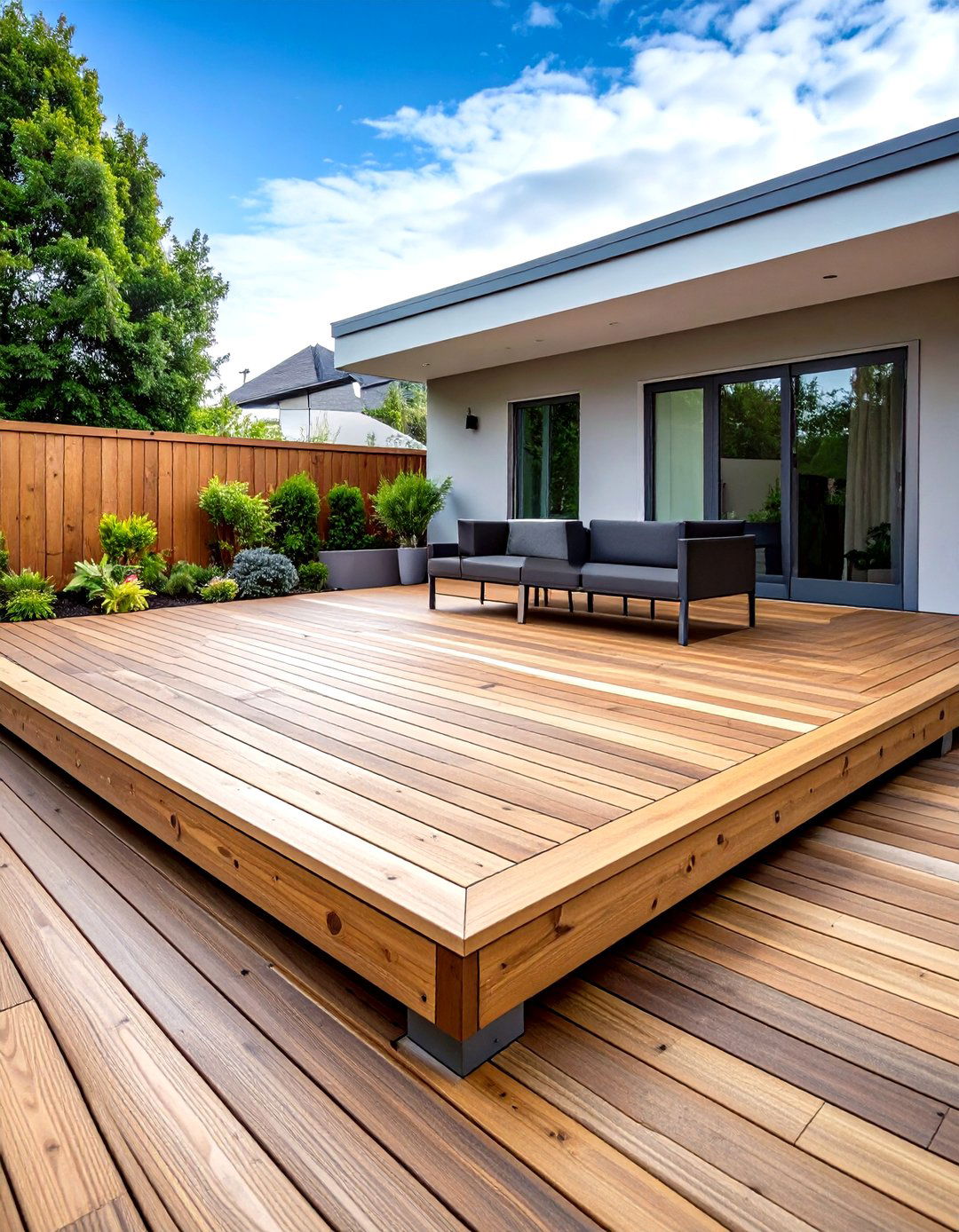
Platform wood deck designs create intimate outdoor rooms at or near ground level, perfect for seamless indoor-outdoor transitions and accessible entertaining. These low-profile wooden platforms require minimal elevation changes while providing defined outdoor spaces that feel connected to surrounding landscapes. Platform designs work exceptionally well in flat yards where dramatic elevation isn't needed but defined outdoor space is desired. The low height reduces railing requirements in many areas while maintaining easy access for all family members. These wooden platforms can incorporate various sizes and shapes to accommodate different furniture arrangements and activities. The ground-level approach often costs less than raised alternatives while still providing the comfort and aesthetics of wooden outdoor flooring that elevates the space above natural terrain.
13. Wood Deck with Privacy Screen for Intimate Outdoor Spaces

Wood deck privacy screen designs create intimate outdoor sanctuaries while maintaining the natural beauty and warmth of wooden construction throughout. These integrated privacy solutions use coordinated materials and finishes to ensure screens appear as intentional design elements rather than afterthoughts. Privacy screens can incorporate various patterns from solid panels to lattice work, allowing for customization based on desired visibility and airflow. The wooden screens often support climbing plants or integrated planters that soften hard lines while increasing privacy over time. These designs work particularly well in urban settings or closely-spaced neighborhoods where outdoor privacy is premium. The privacy elements can define different zones within larger deck spaces while maintaining consistent wooden aesthetics and creating cozy, protected areas for relaxation and intimate gatherings.
14. Wood Deck with Built-In Planters for Garden Integration

Wood deck designs with integrated planters seamlessly blend outdoor living spaces with gardening opportunities, creating lush environments that feel naturally integrated rather than constructed. Built-in wooden planters can line deck perimeters, create room dividers, or accent specific areas while maintaining consistent material aesthetics throughout the space. These integrated gardening features soften hard deck lines while providing opportunities for seasonal color changes and aromatic plants that enhance outdoor experiences. The wooden planter construction coordinates with deck materials while providing proper drainage and root protection. Planters can accommodate various plant sizes from small herbs and flowers to larger shrubs or small trees that add vertical interest. The integration of growing elements creates living outdoor spaces that evolve seasonally while maintaining the structural beauty of well-designed wooden deck construction.
15. Wood Deck with Outdoor Kitchen for Culinary Entertainment
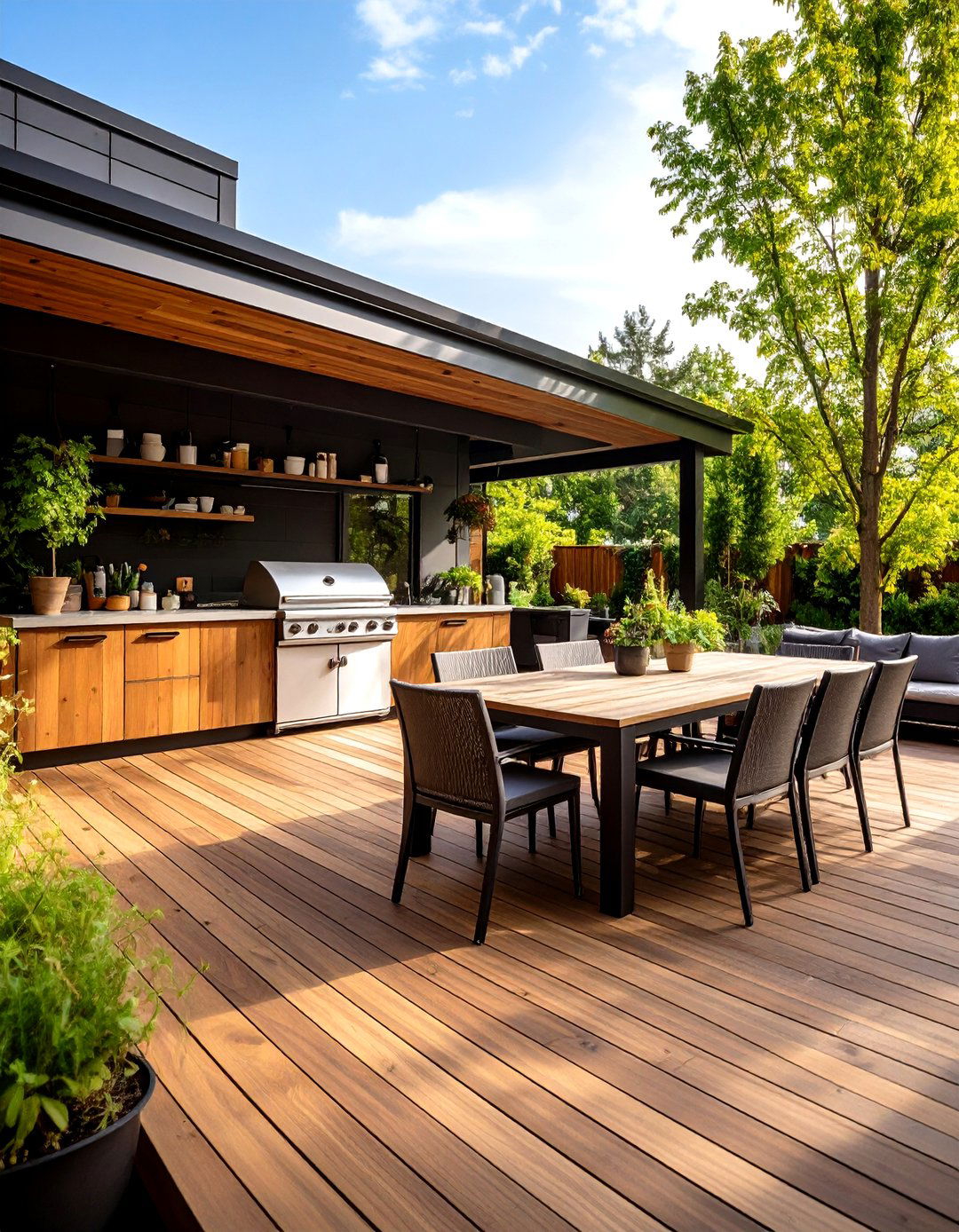
Wood deck outdoor kitchen designs create comprehensive entertaining spaces that combine cooking functionality with the natural warmth and beauty of wooden surfaces. These sophisticated installations integrate appliances, storage, and prep areas within wooden framework systems that coordinate with deck materials and finishes. The kitchen integration often features stone or metal elements for safety around heat sources while maintaining wooden cabinetry and structural elements. Outdoor kitchen decks require careful planning for utilities, ventilation, and weather protection while ensuring smooth traffic flow between cooking and dining areas. The wooden elements provide warm contrast to stainless steel appliances while creating cohesive design themes. These comprehensive outdoor cooking spaces extend indoor culinary capabilities while taking advantage of natural settings and wooden aesthetics that create memorable dining experiences.
16. Wood Deck with Hot Tub for Spa-Like Relaxation
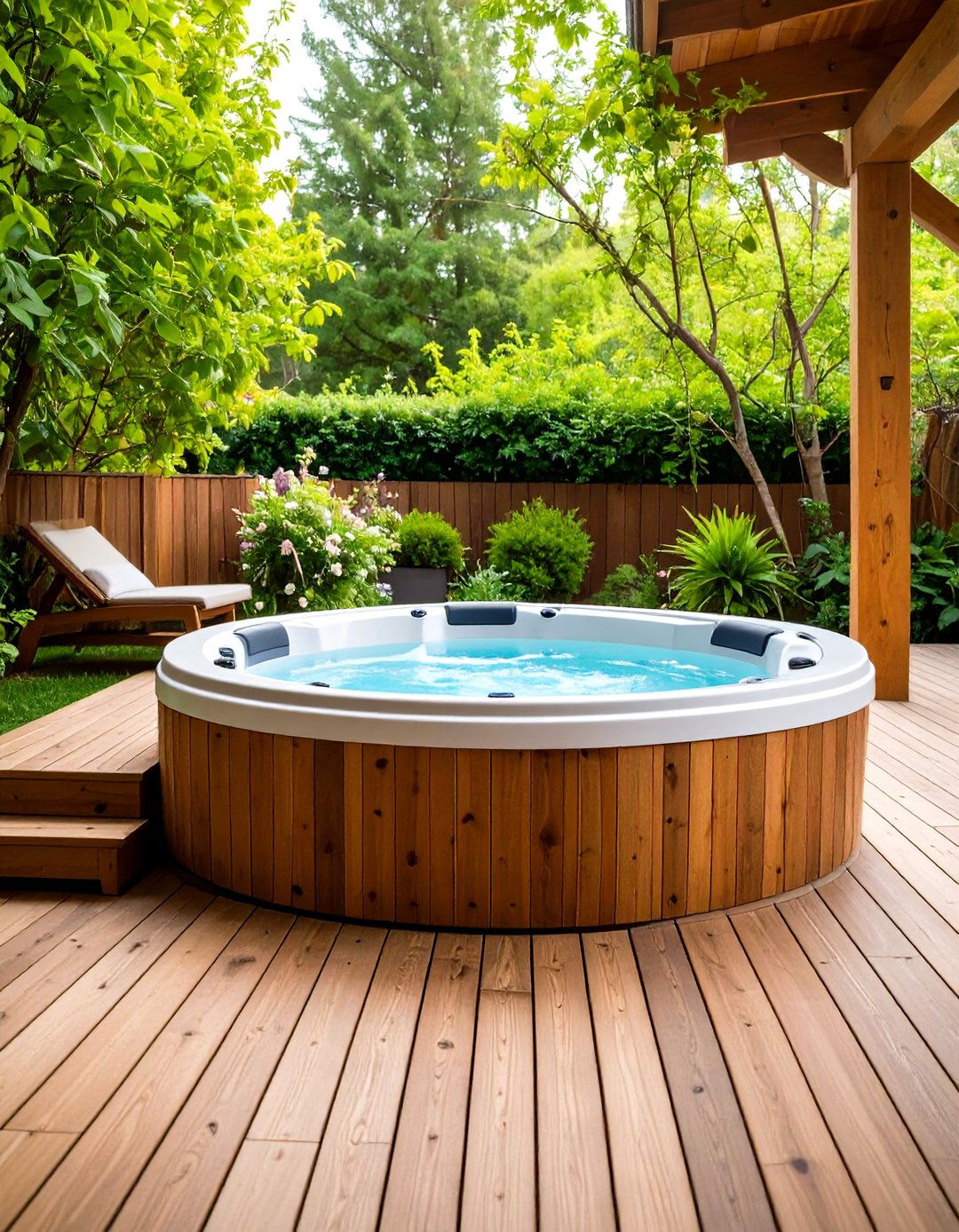
Wood deck hot tub designs create luxurious outdoor spa environments that combine relaxation features with the natural beauty of wooden construction. These specialized installations require reinforced structural support to handle the significant weight of filled hot tubs while providing safe, comfortable access areas. The wooden deck integration often includes privacy screens, built-in storage for accessories, and carefully planned entry and exit areas. Elevated wooden platforms around hot tubs create the impression of custom installation while providing practical benefits like improved drainage and easier maintenance access. The natural wood materials complement most hot tub finishes while providing warm, comfortable surfaces for barefoot use. These relaxation-focused designs often incorporate additional features like built-in seating, towel storage, and ambient lighting that enhance the spa-like atmosphere.
17. Rooftop Wood Deck for Urban Outdoor Escapes

Rooftop wood deck designs transform underutilized urban spaces into private outdoor retreats that provide escape from city environments while maintaining natural material aesthetics. These elevated installations require special attention to weight loads, wind resistance, and drainage systems while creating functional outdoor rooms above street level. Rooftop wooden decks often incorporate privacy screens, wind barriers, and container gardens that create intimate spaces despite exposed locations. The wood materials provide warm contrast to urban concrete and steel while creating comfortable outdoor flooring that handles foot traffic well. These designs maximize outdoor space in dense urban environments where ground-level yards aren't available. Rooftop wooden deck installations often become focal points for entertaining and relaxation while providing unique perspective views of surrounding city environments.
18. Wood Deck with Gazebo for Formal Outdoor Elegance

Wood deck gazebo combinations create formal outdoor entertaining spaces that provide weather protection while maintaining elegant natural material aesthetics throughout. The gazebo structure often coordinates with deck materials and finishes to create cohesive design themes that appear intentionally integrated rather than added later. These formal installations provide defined outdoor rooms perfect for dining, ceremonies, or intimate gatherings while offering protection from sun and weather. The wooden construction allows for various architectural styles from traditional Victorian influences to contemporary clean lines. Gazebo deck combinations often become focal points for landscape design while providing substantial functional benefits. The enclosed feeling creates intimate spaces within larger outdoor areas while maintaining visual connection to surrounding gardens and landscapes through carefully planned openings and sight lines.
19. Wood Deck with Spiral Stairs for Space-Efficient Access
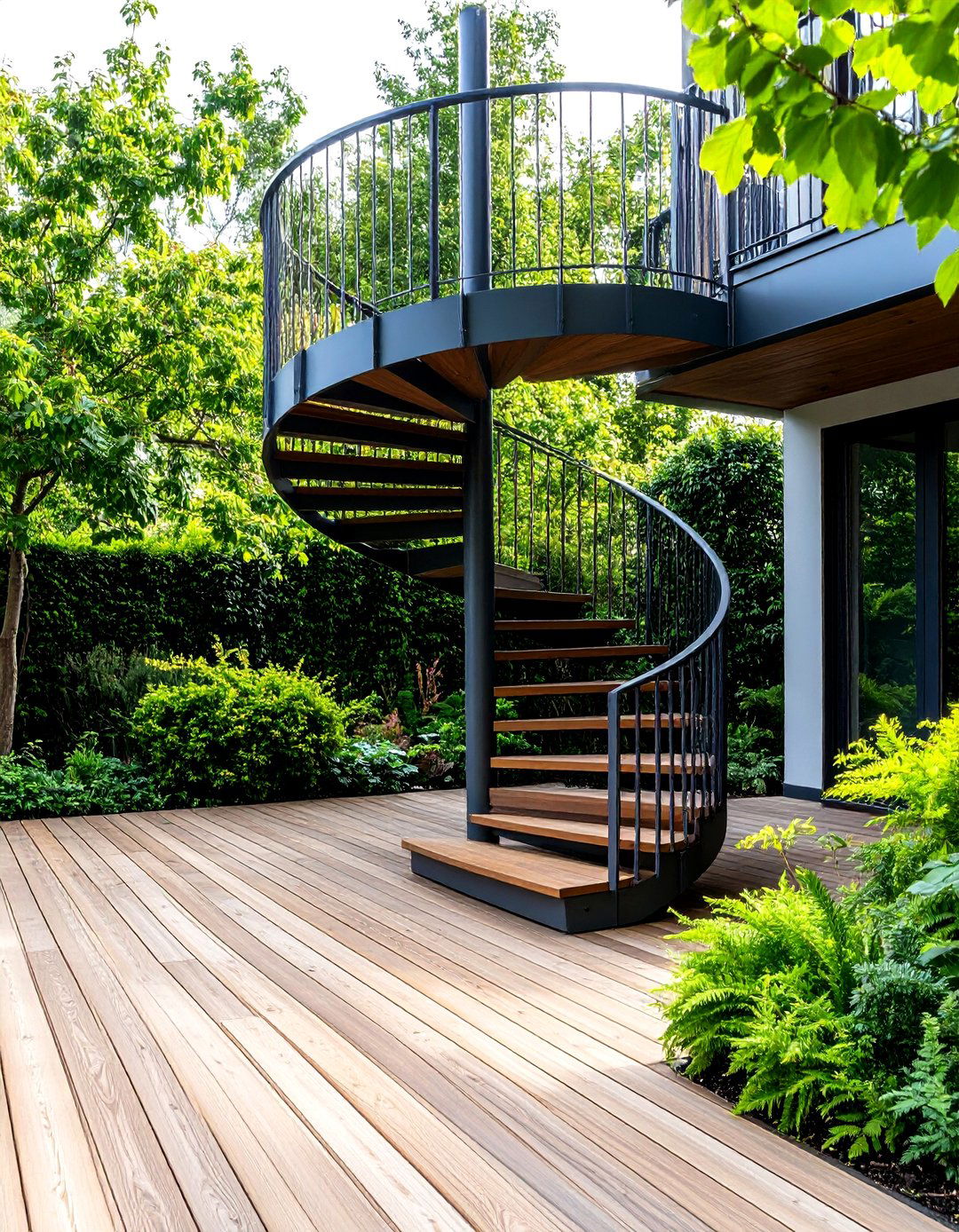
Wood deck spiral stair designs provide elegant, space-efficient access solutions that add architectural interest while maintaining consistent natural material aesthetics throughout vertical transitions. These sophisticated installations work particularly well where space constraints prevent traditional straight stair systems while creating dramatic focal points within deck designs. Spiral wooden stairs can accommodate various styles from rustic log construction to sleek contemporary designs with metal accents. The curved construction allows for creative integration with deck layouts while providing safe, code-compliant access between levels. These space-saving solutions often become sculptural elements that enhance overall deck design while solving practical access challenges. The wooden construction ensures spiral stairs coordinate with deck materials while providing durable, attractive connection between different outdoor living levels.
20. Wood Deck with Built-In Seating for Integrated Comfort
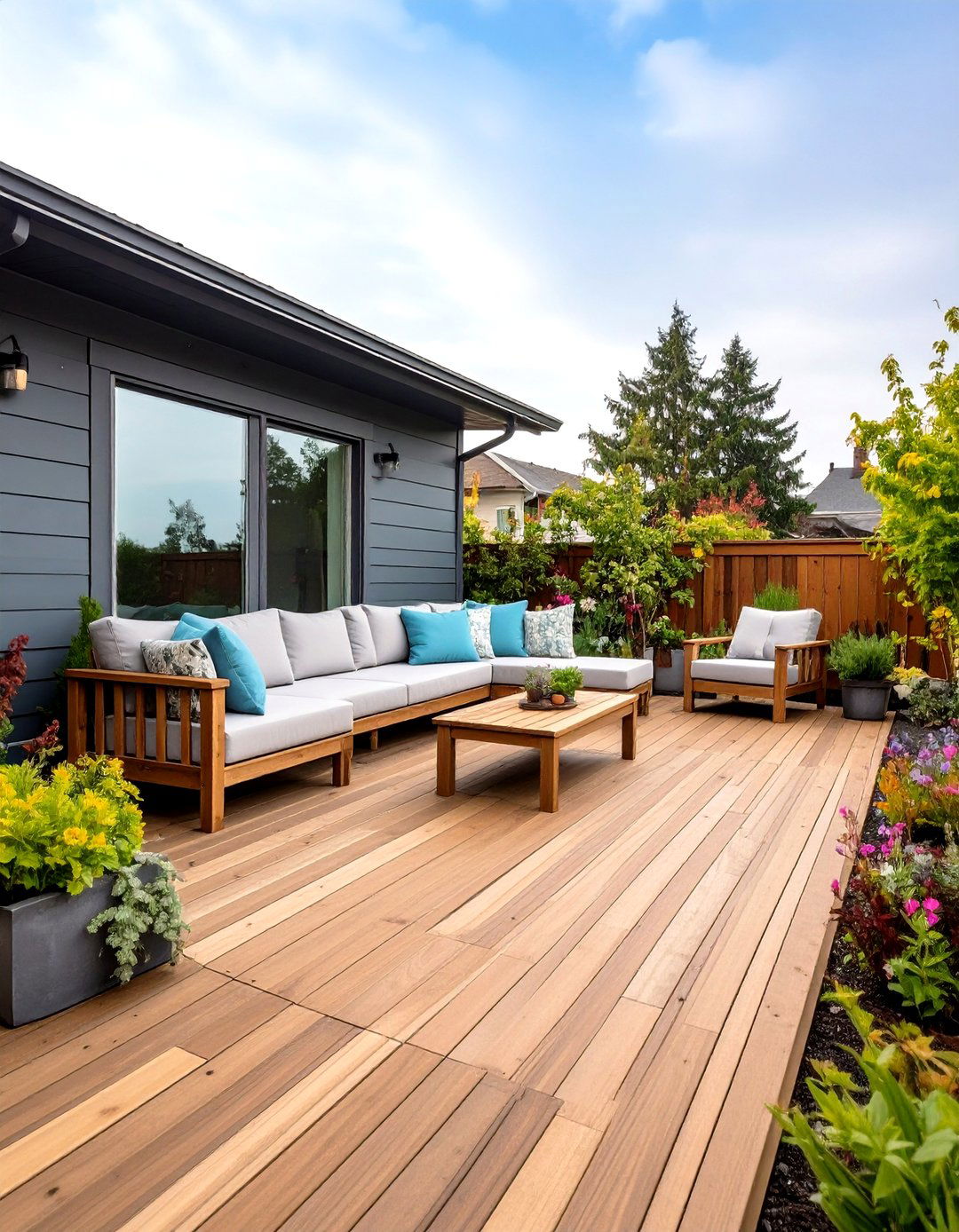
Wood deck built-in seating designs maximize functional space while creating cohesive outdoor environments that appear custom-designed rather than furnished with separate pieces. Integrated wooden benches and seating areas utilize deck materials and construction techniques to create seamless transitions between flooring and furniture. Built-in seating can line deck perimeters, create conversation areas, or define different functional zones while maintaining consistent aesthetic themes. The integrated approach often provides storage opportunities beneath seating areas while ensuring furniture won't shift during weather events. Custom sizing allows seating to accommodate specific spaces and family needs while coordinating perfectly with architectural elements. These integrated seating solutions often cost less than equivalent outdoor furniture while providing permanent comfort features that enhance deck functionality and encourage regular outdoor use throughout various seasons.
Conclusion:
These 20 wood deck ideas demonstrate the incredible versatility and enduring appeal of natural wood construction for outdoor living spaces. From budget-friendly pressure-treated options to luxury redwood installations, each design offers unique benefits that can transform any backyard into a functional, beautiful retreat. Whether you prefer simple platform designs or elaborate multi-level structures with integrated features, wood decking provides the warmth, character, and natural beauty that creates truly inviting outdoor environments for decades of enjoyment.


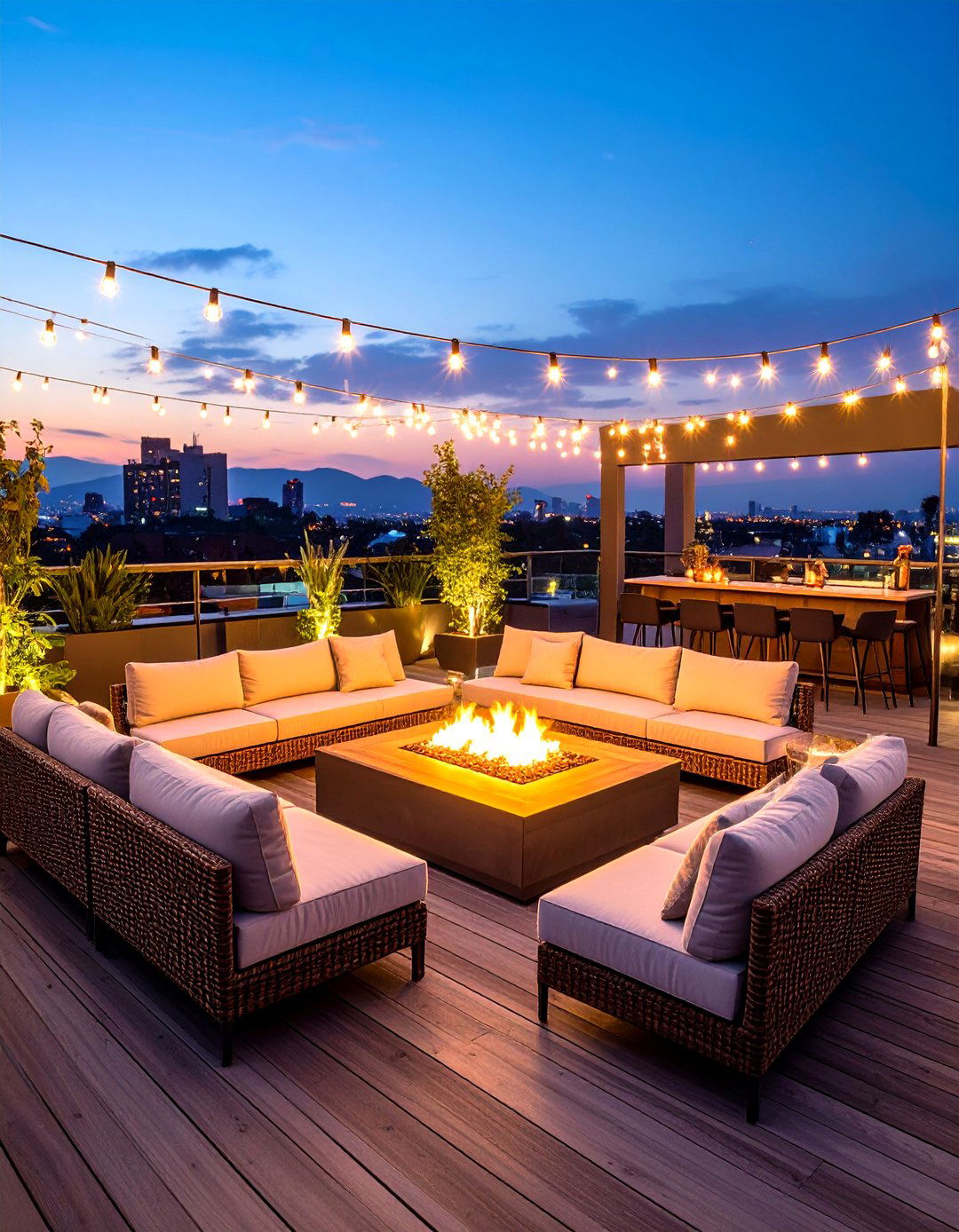
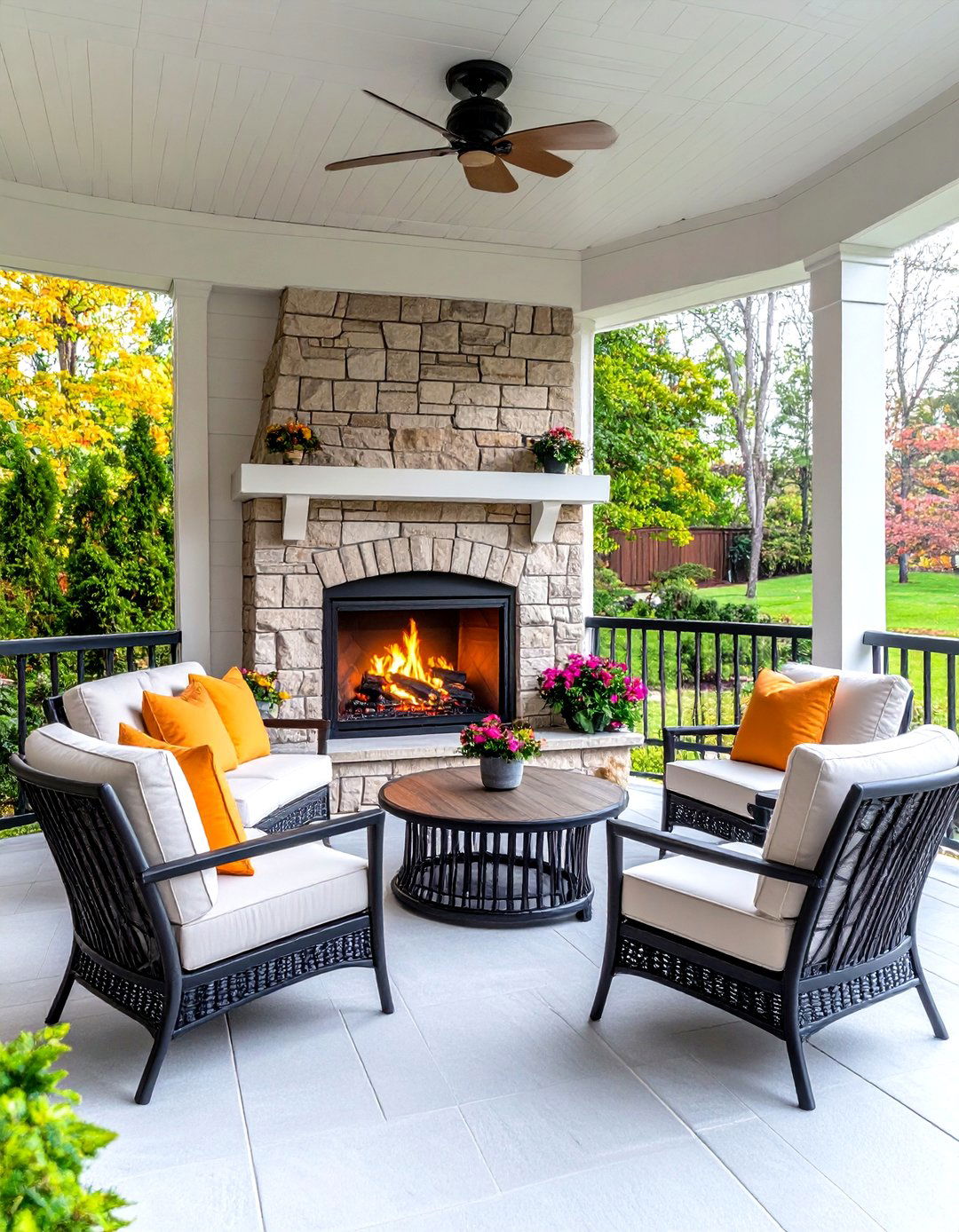
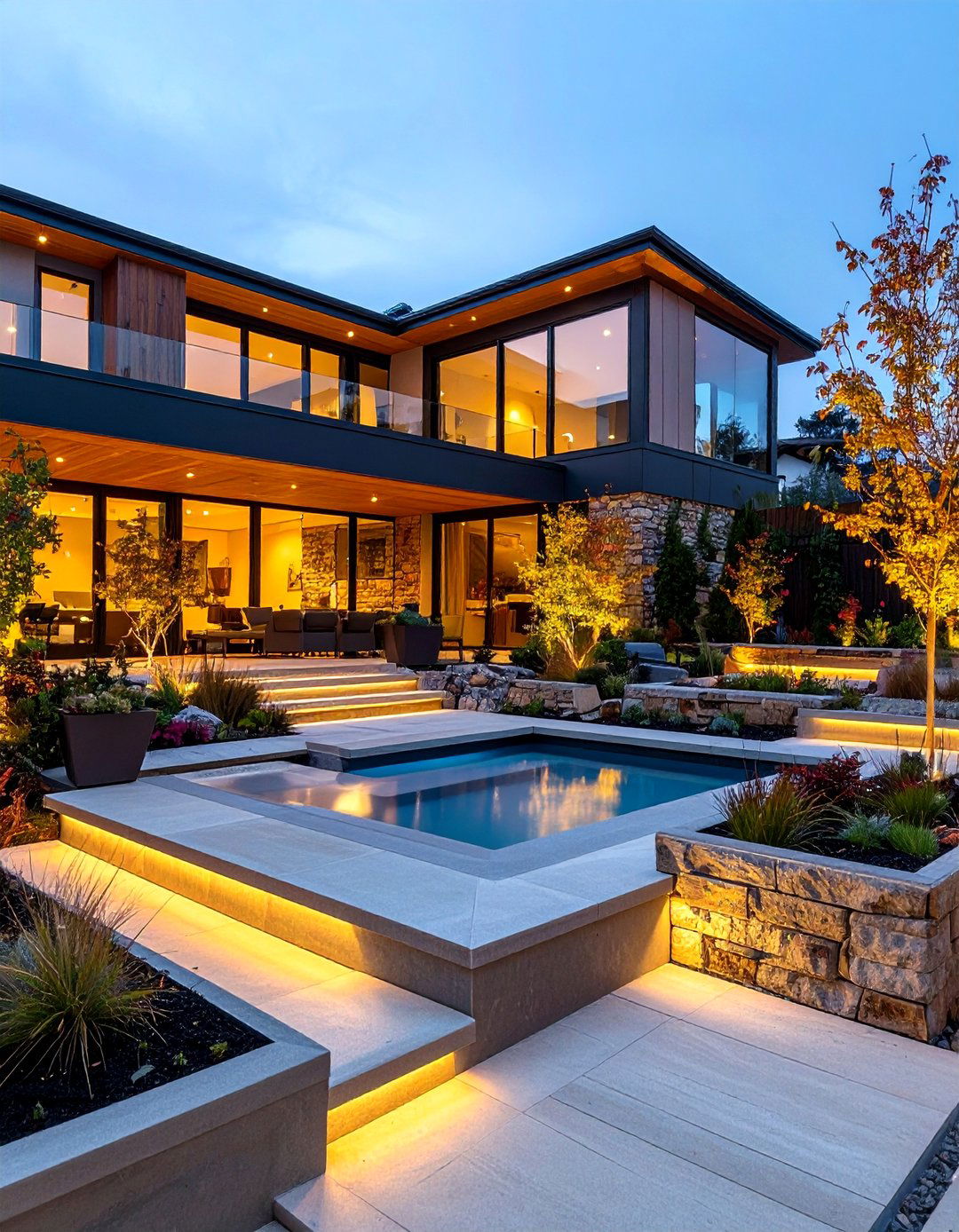
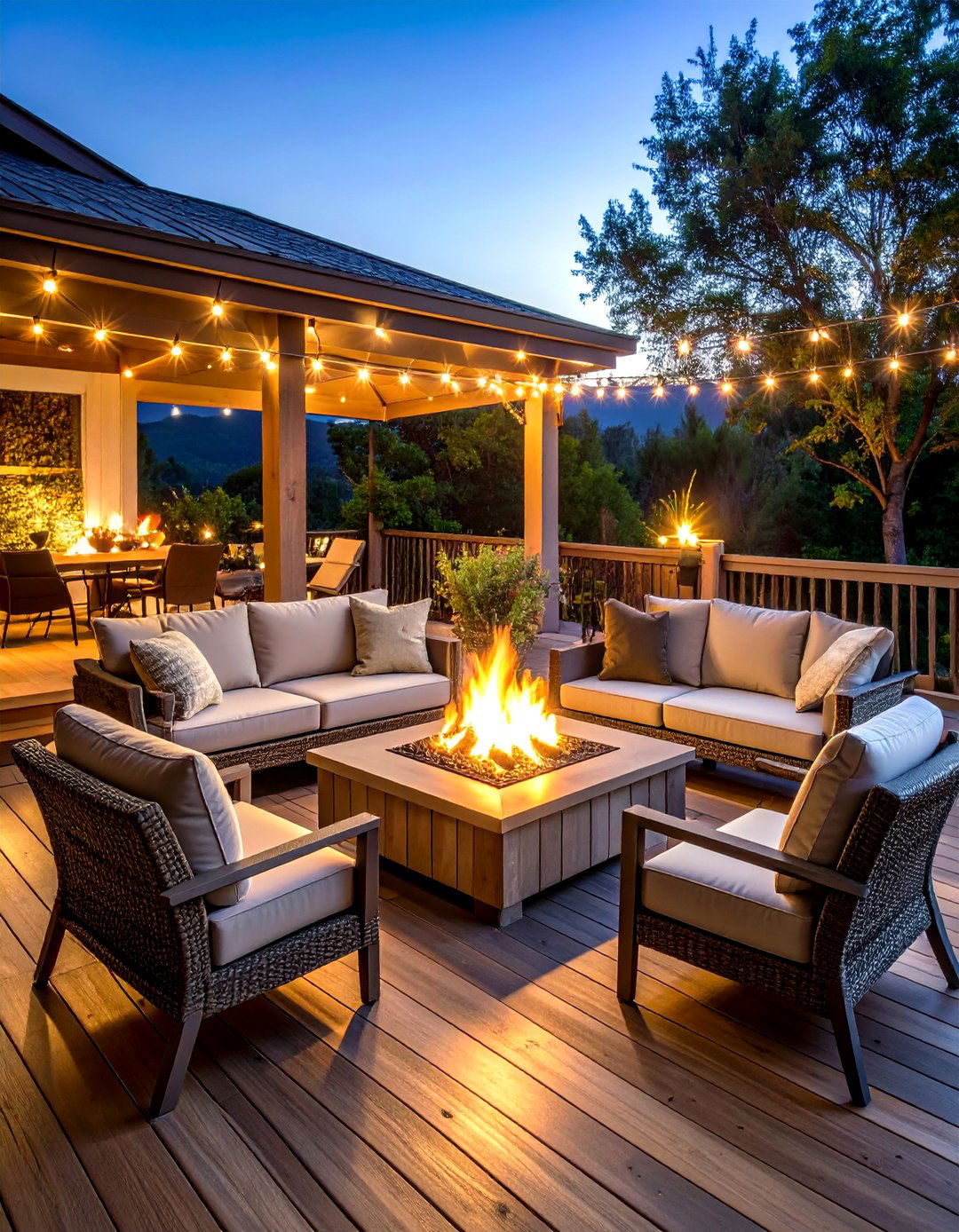
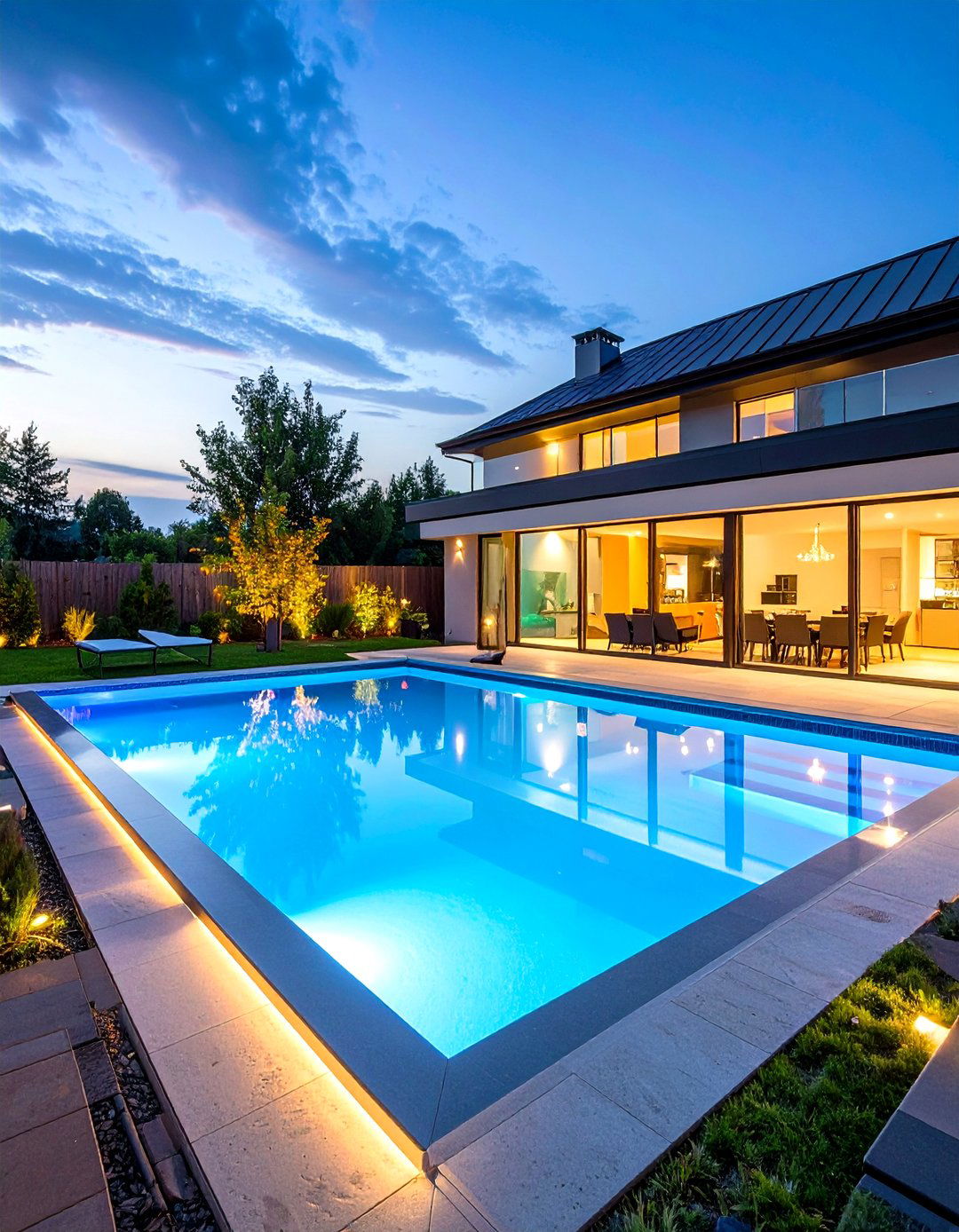
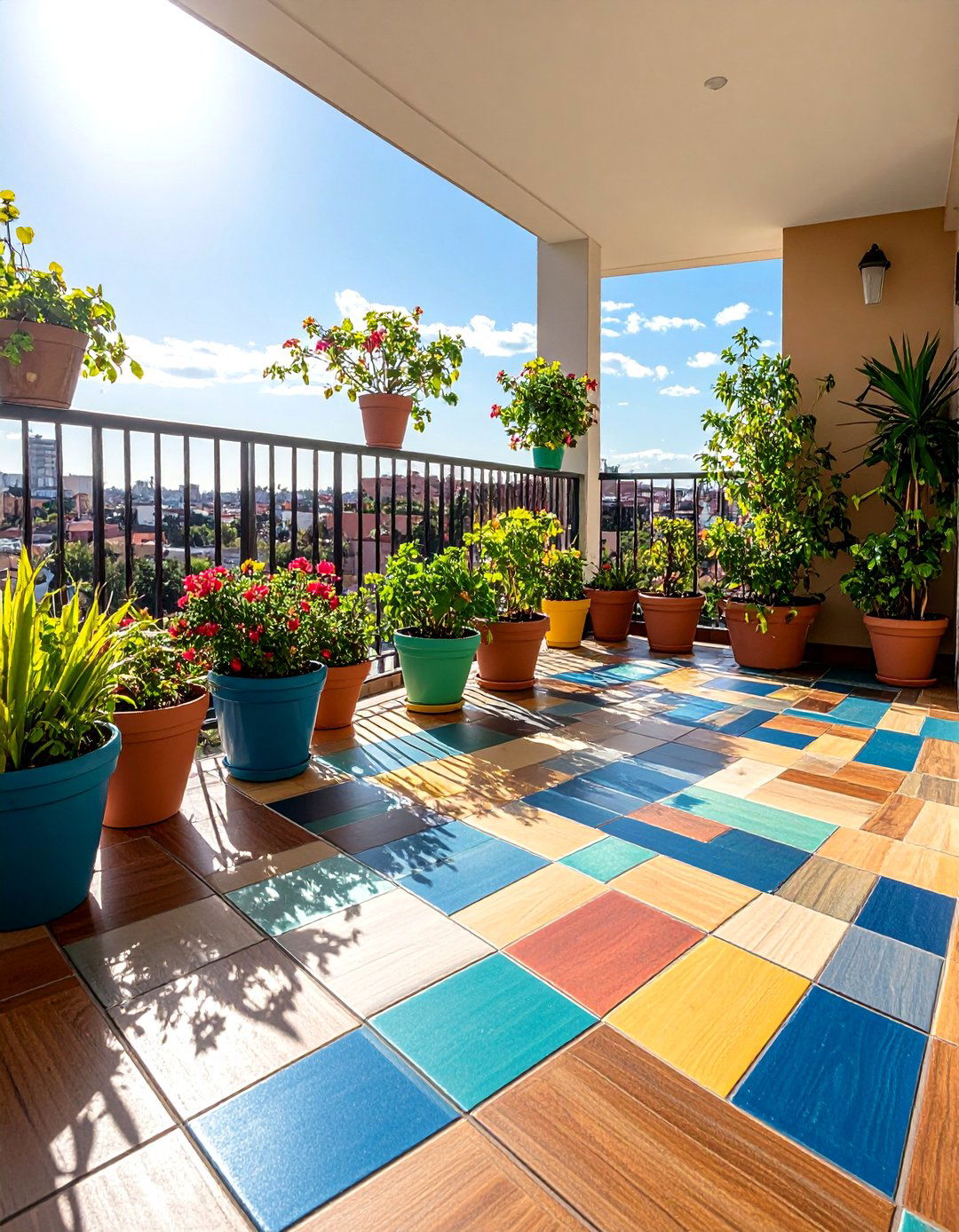
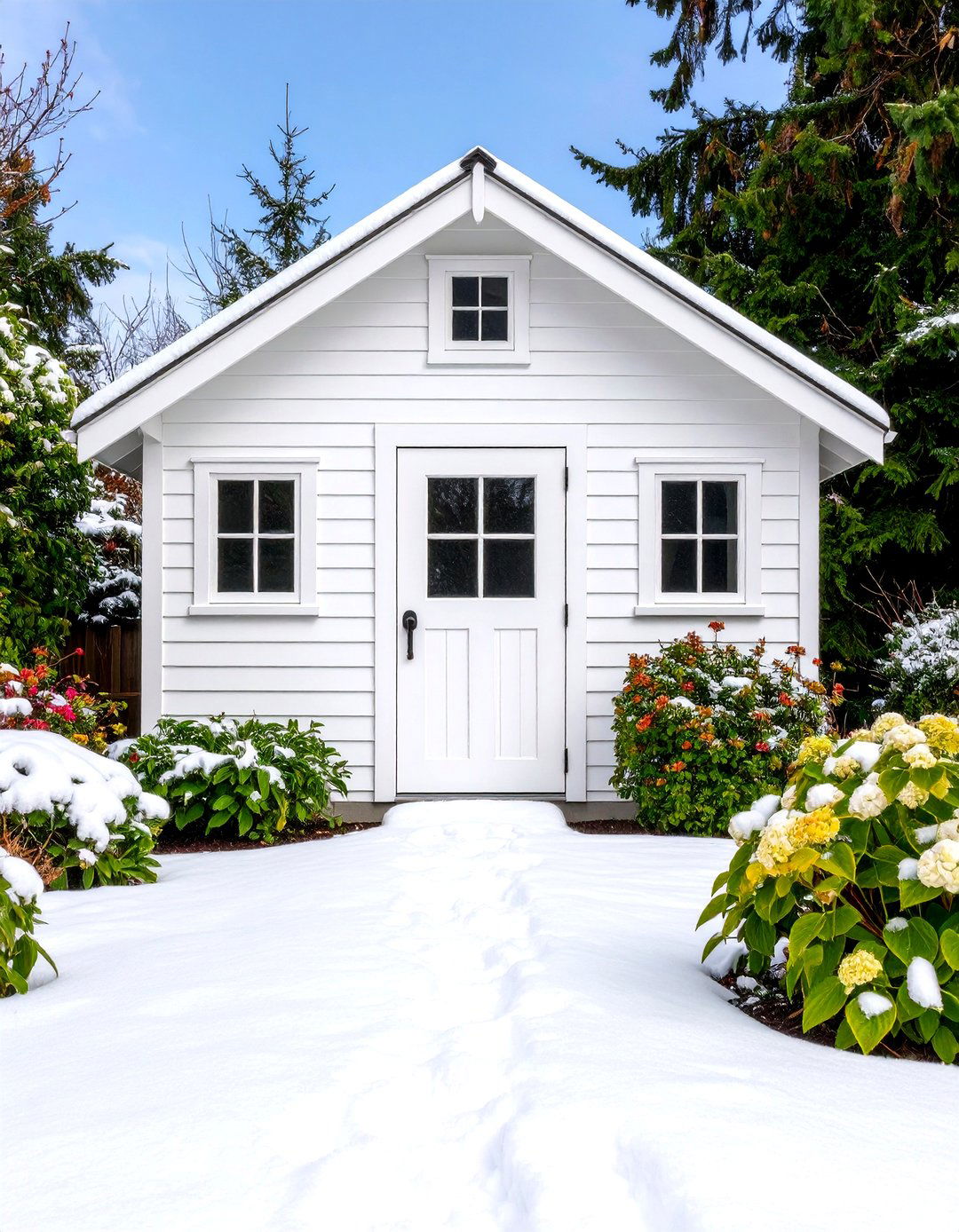
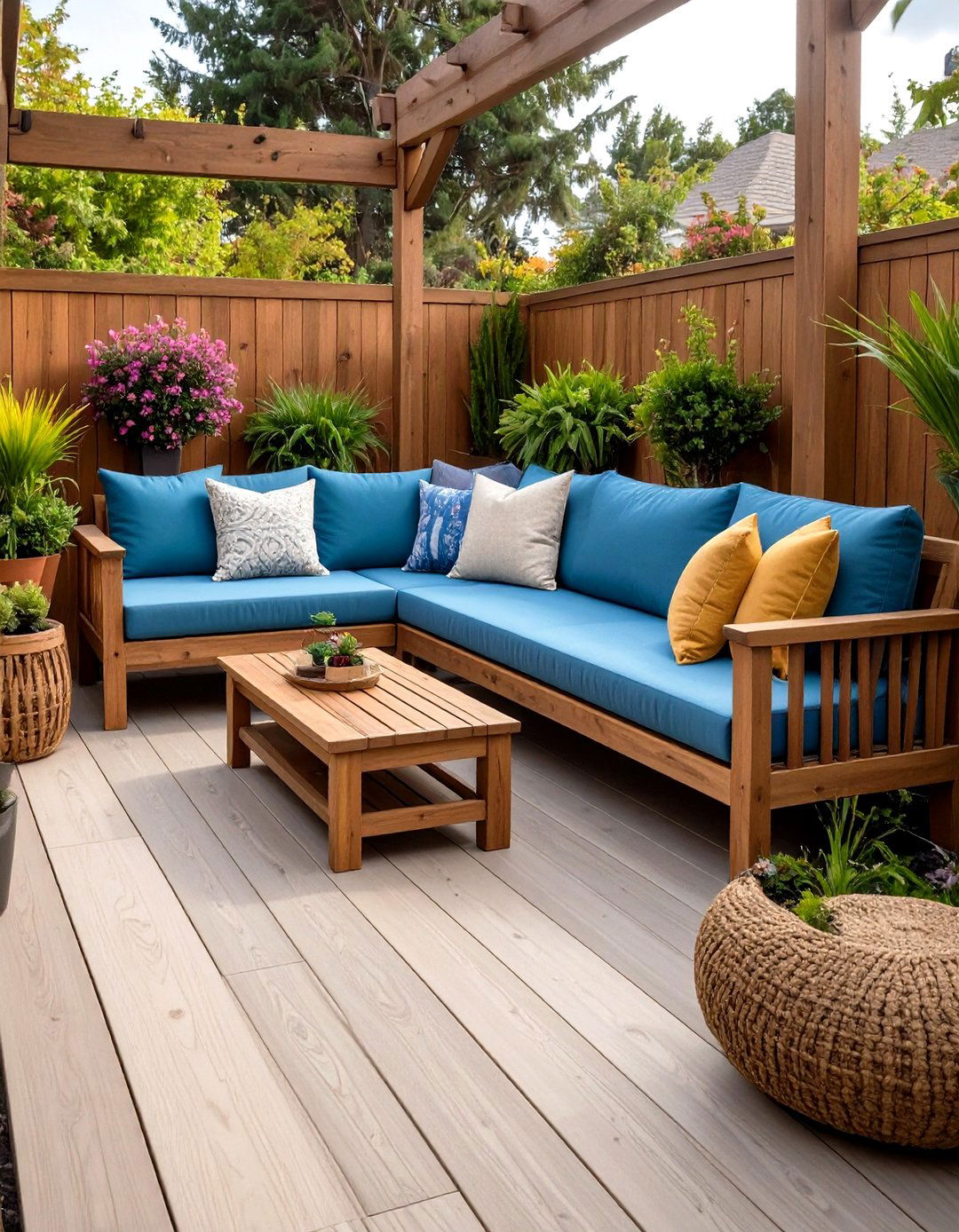

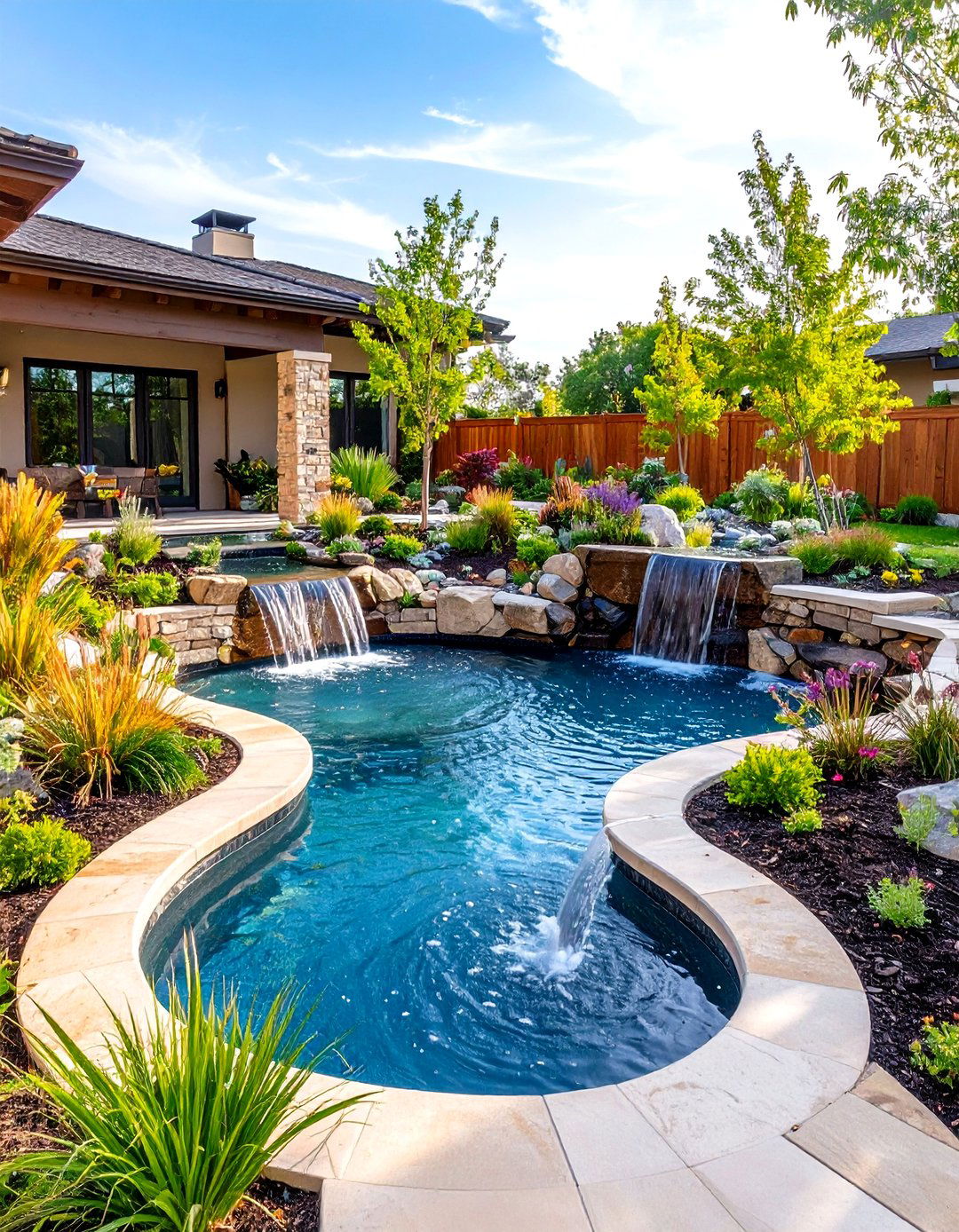
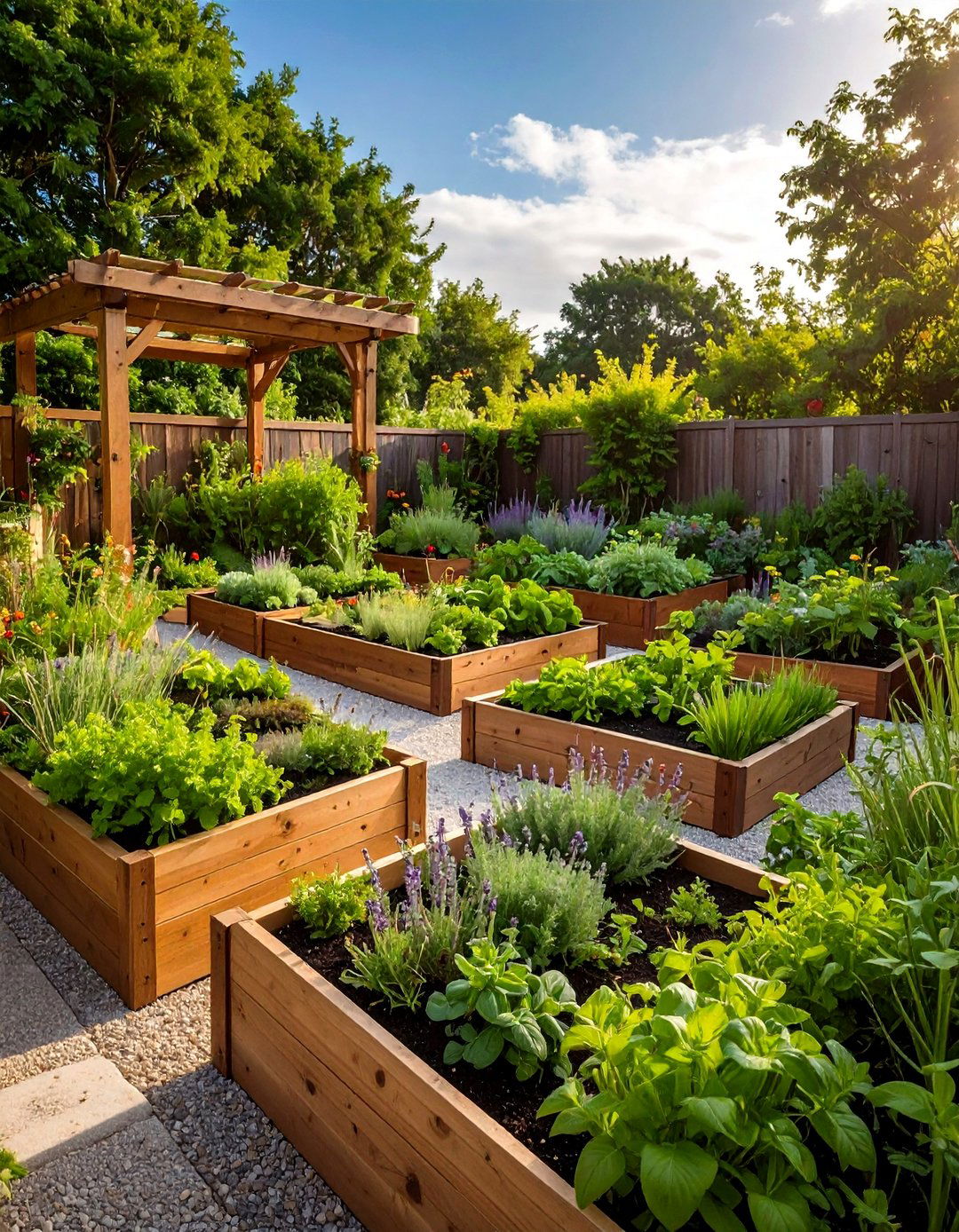
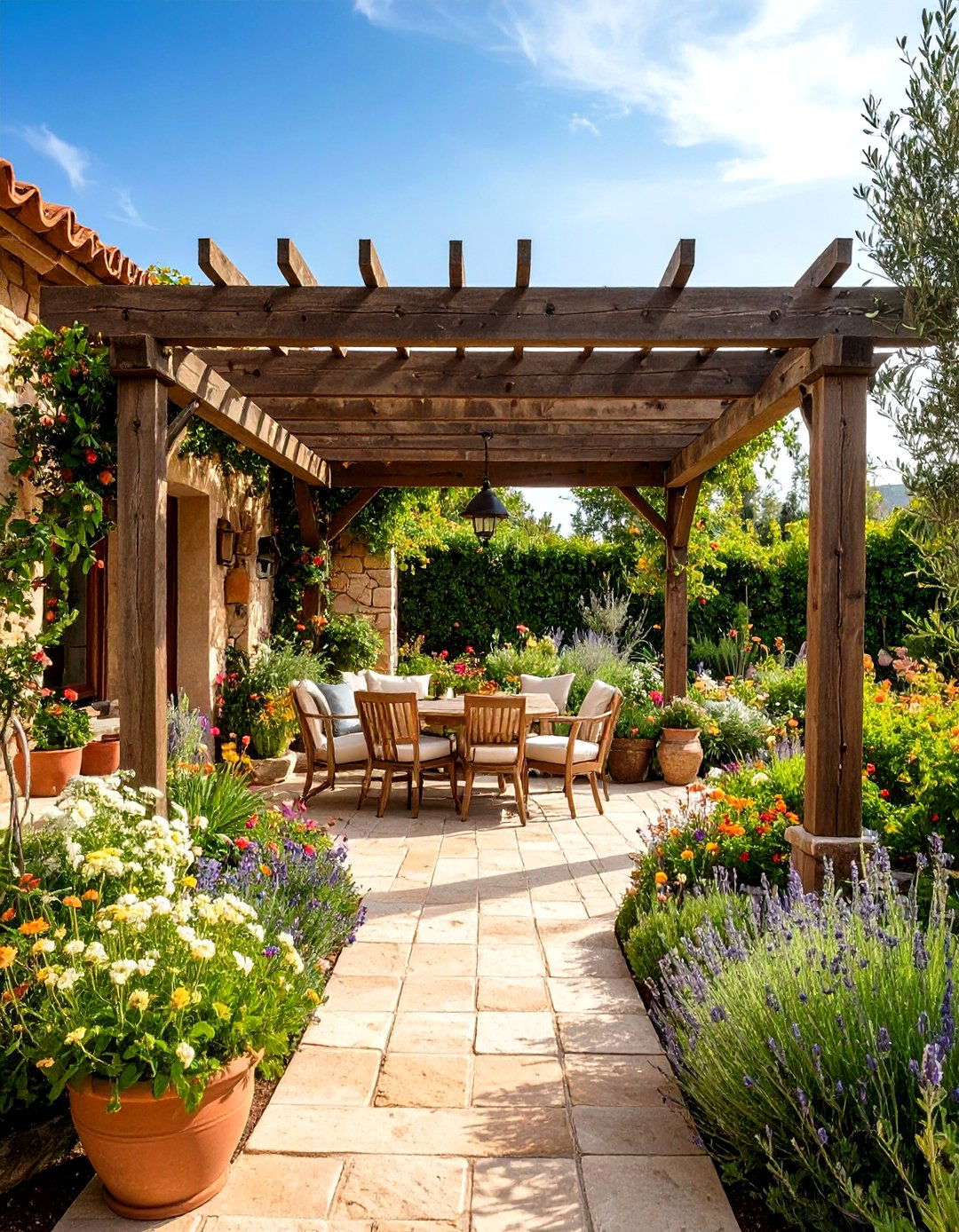
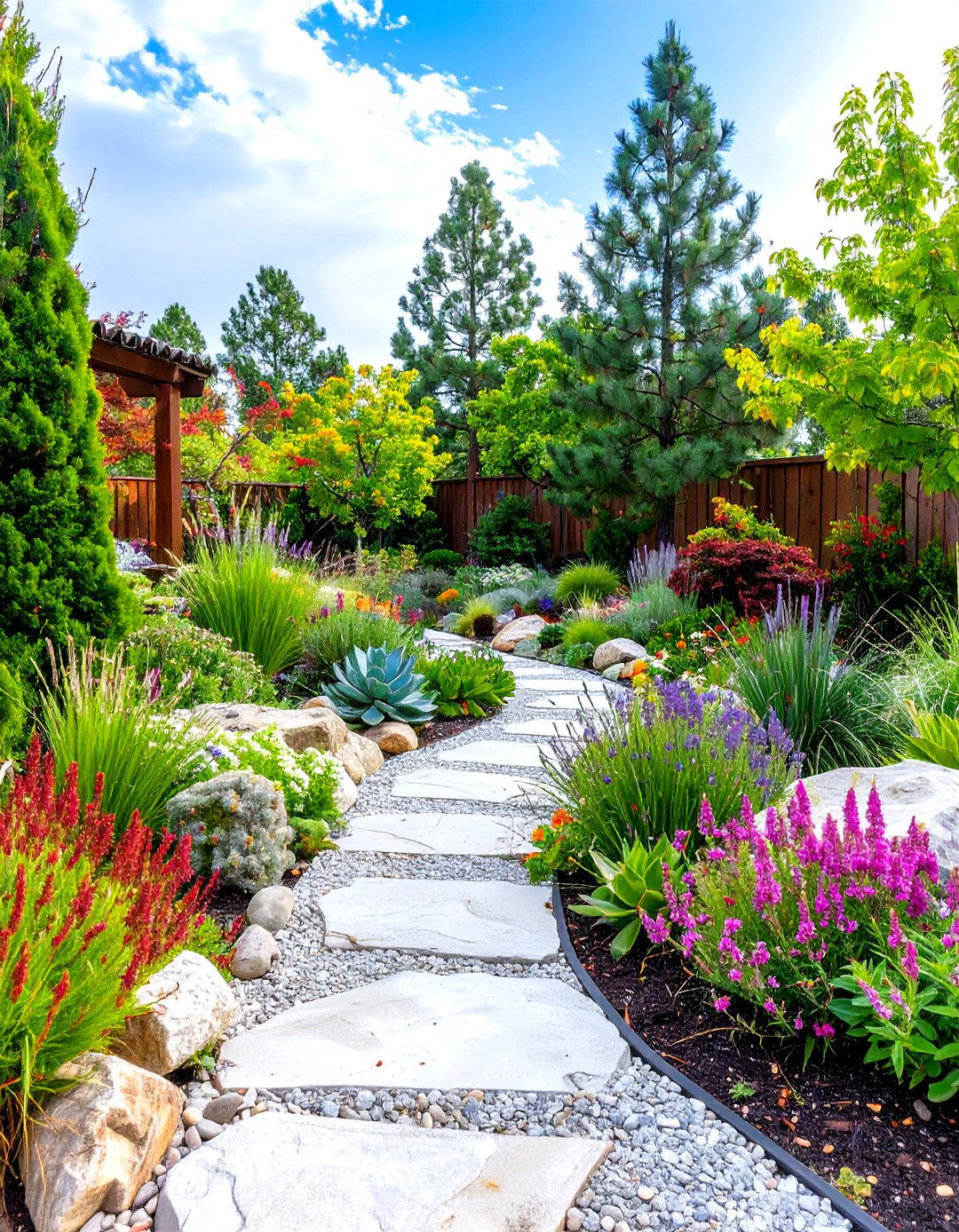
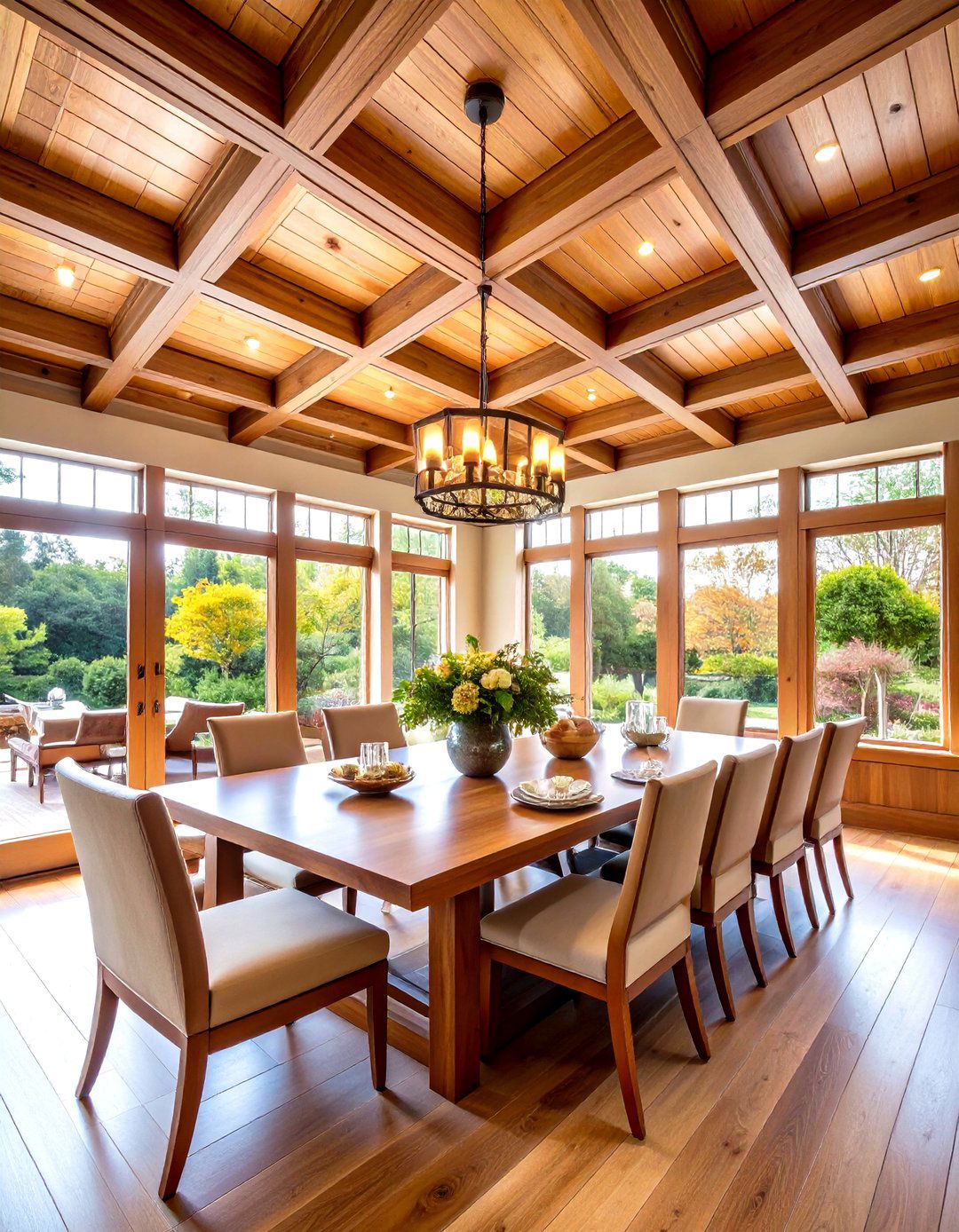
Leave a Reply